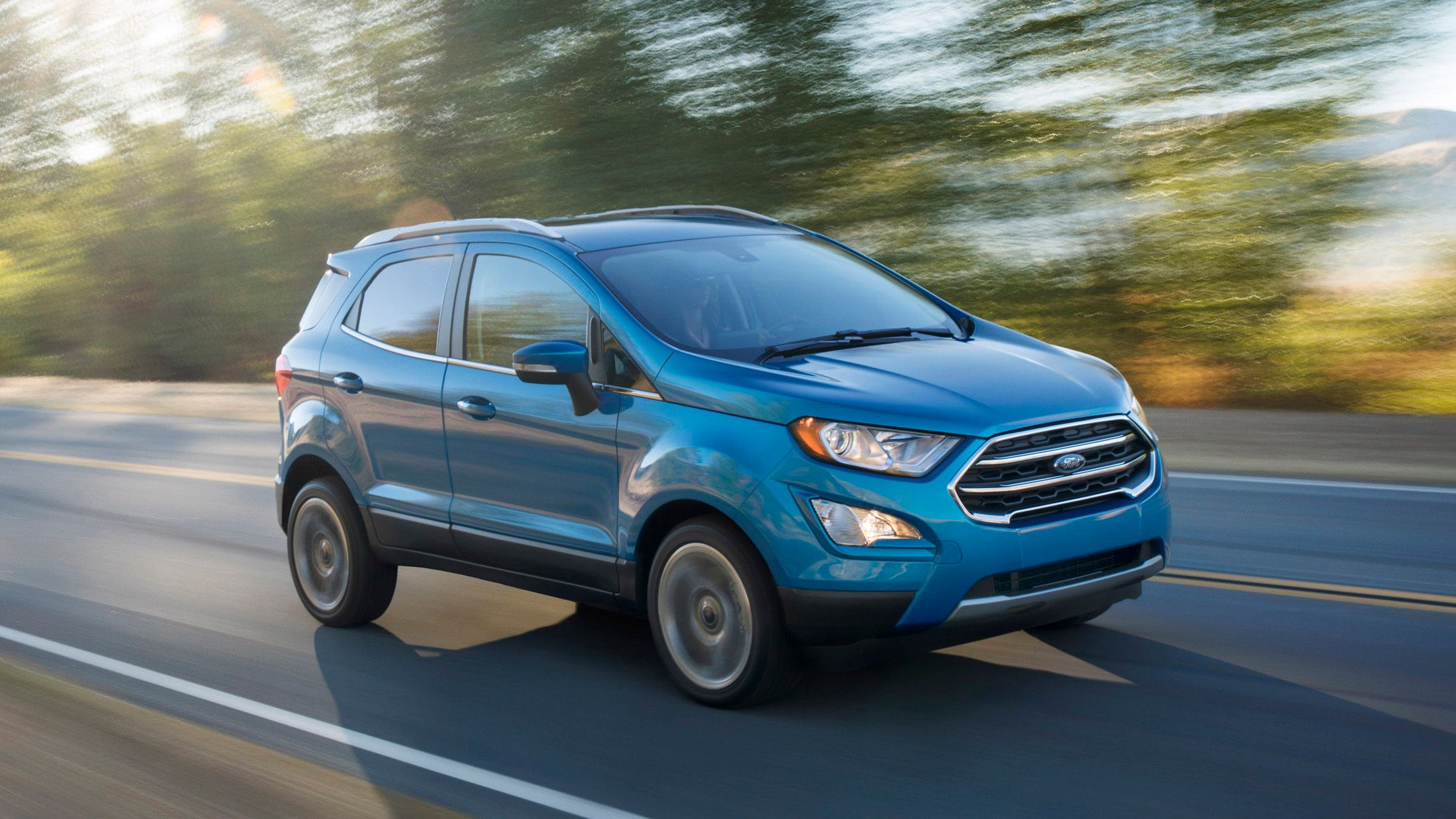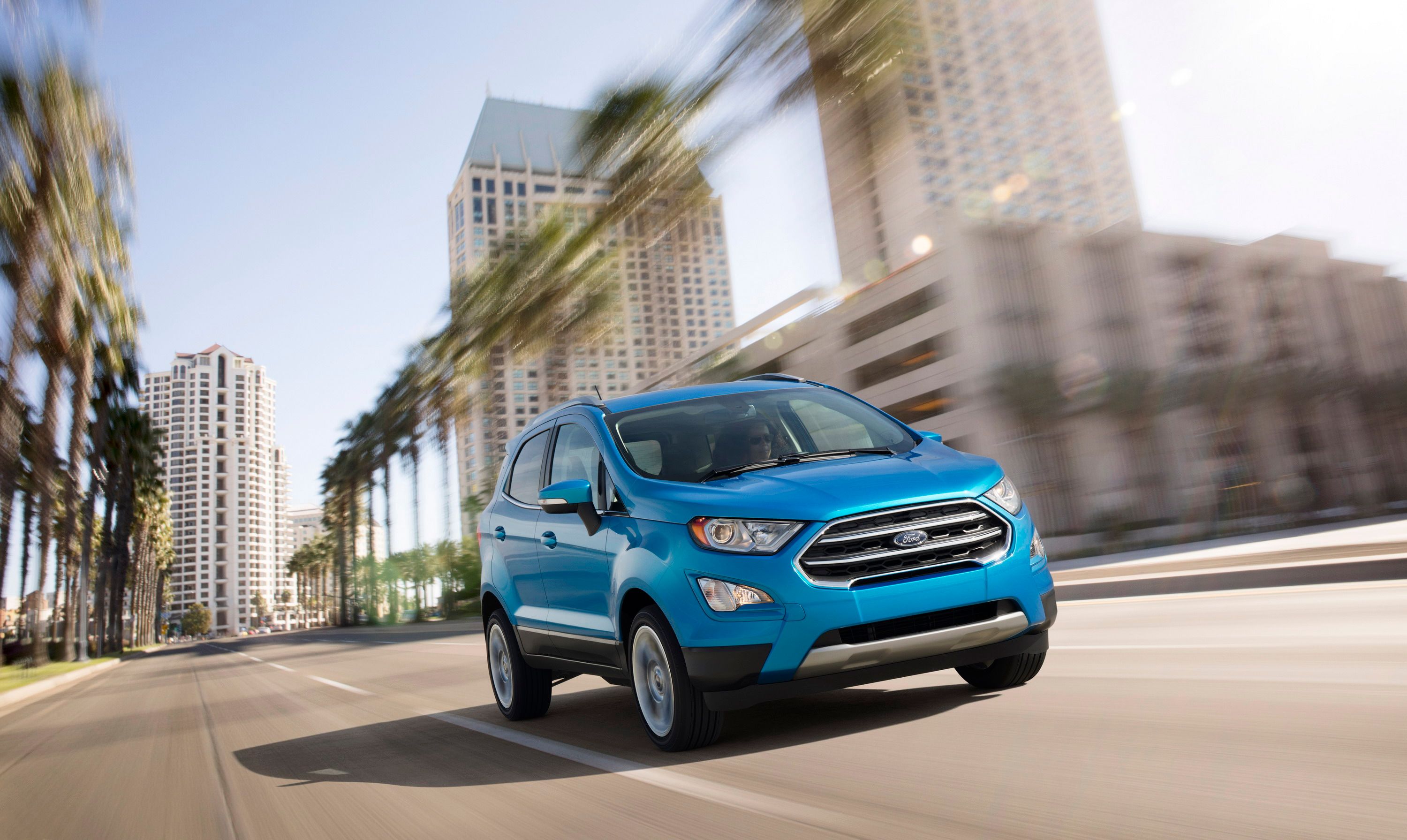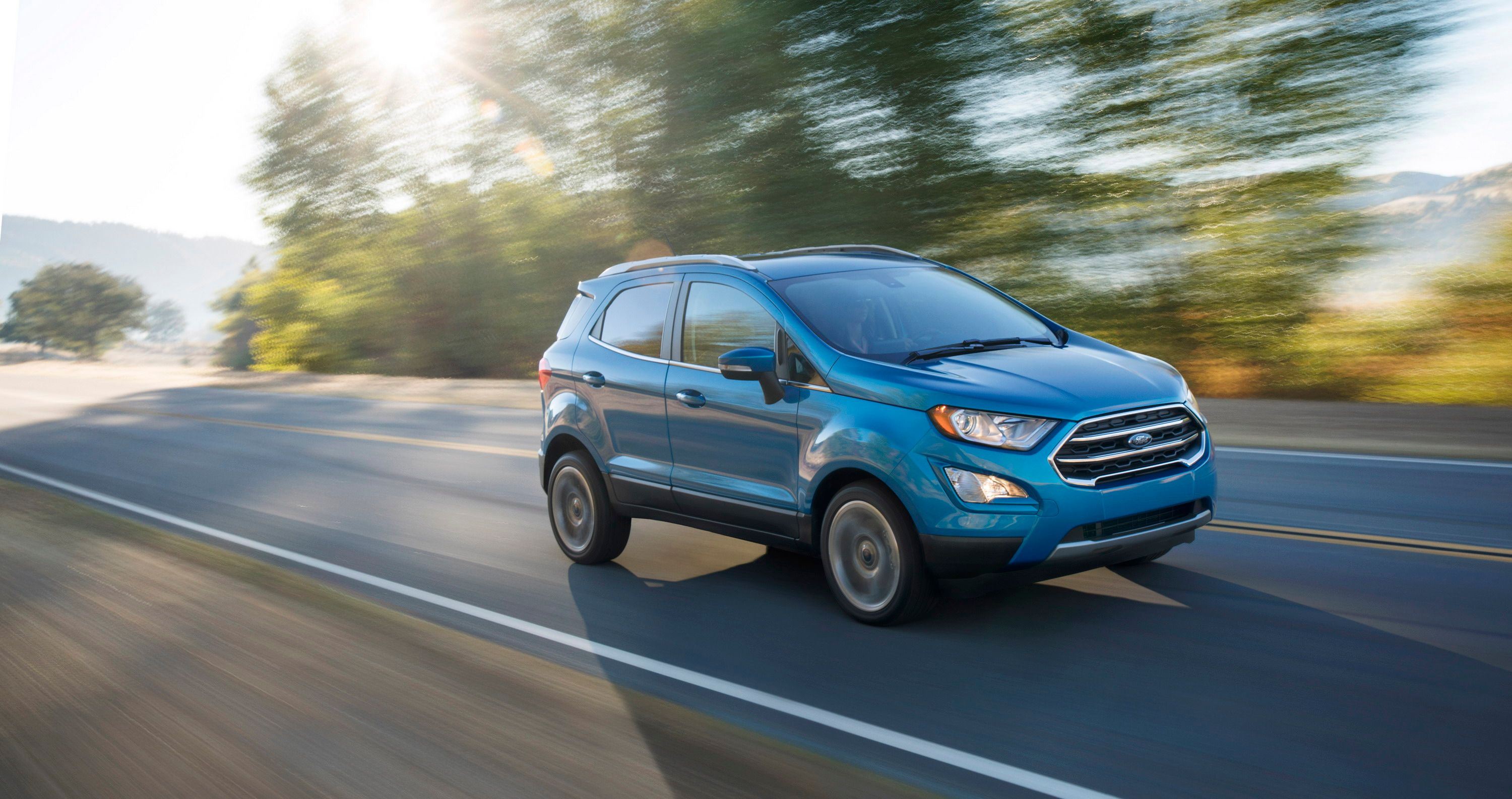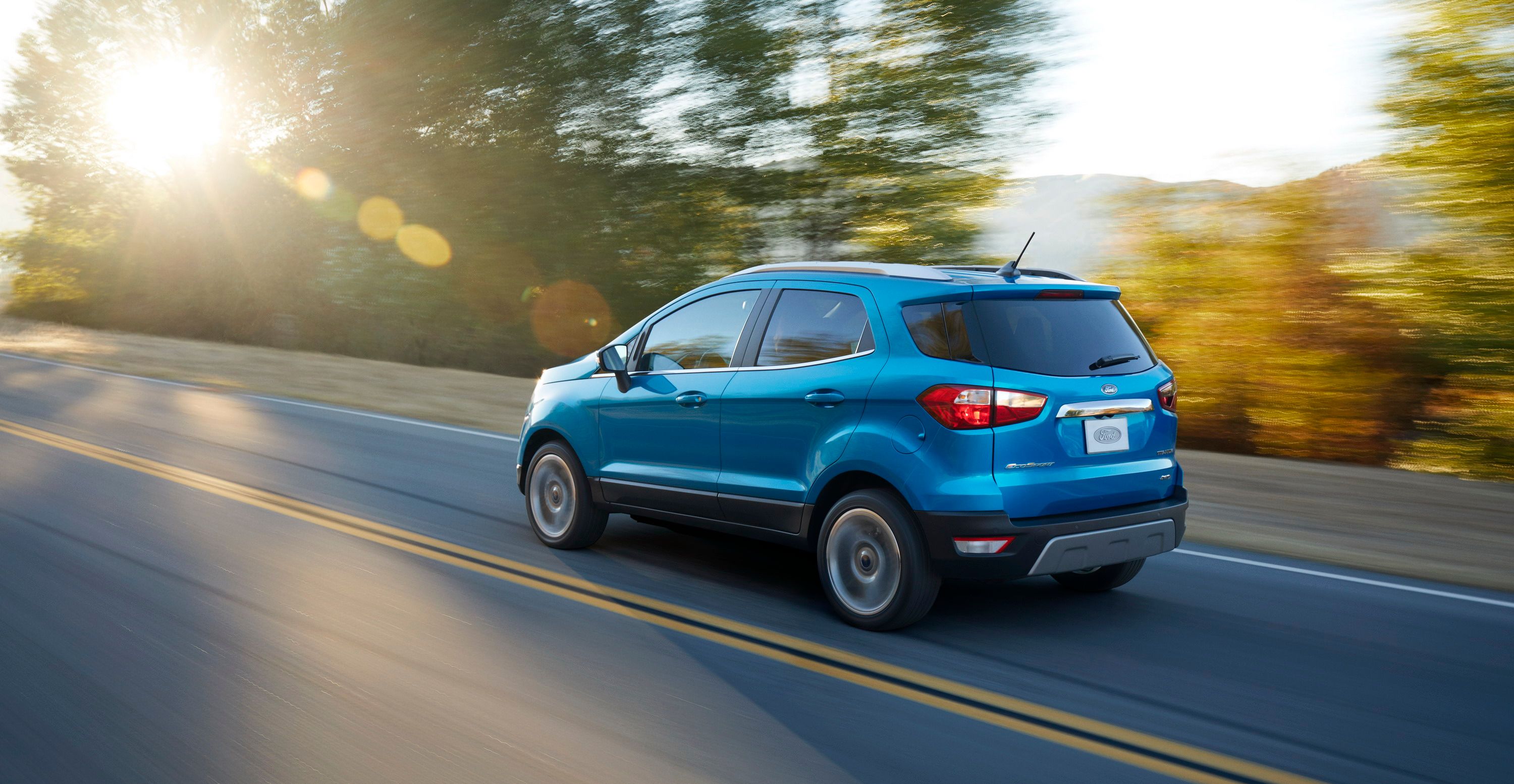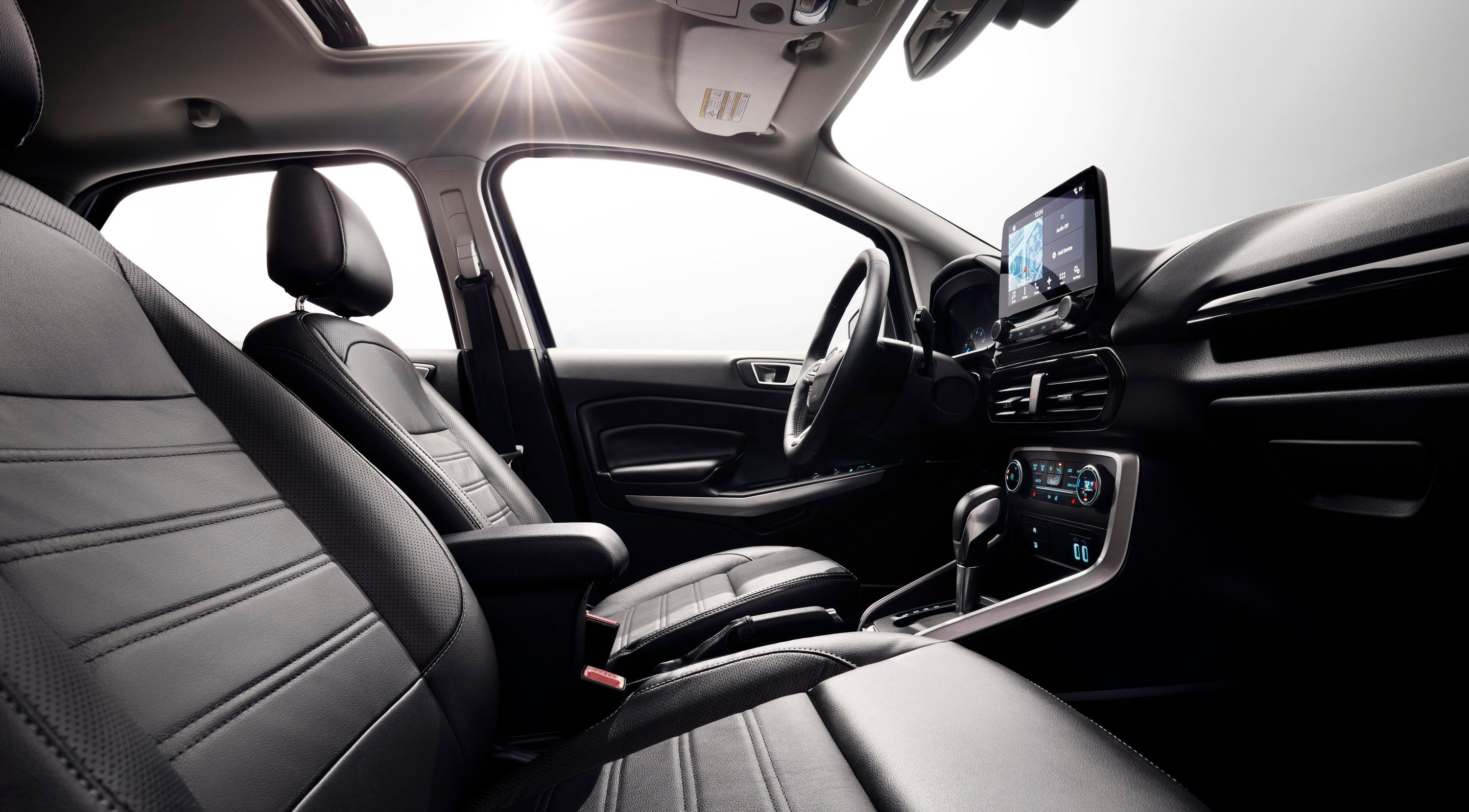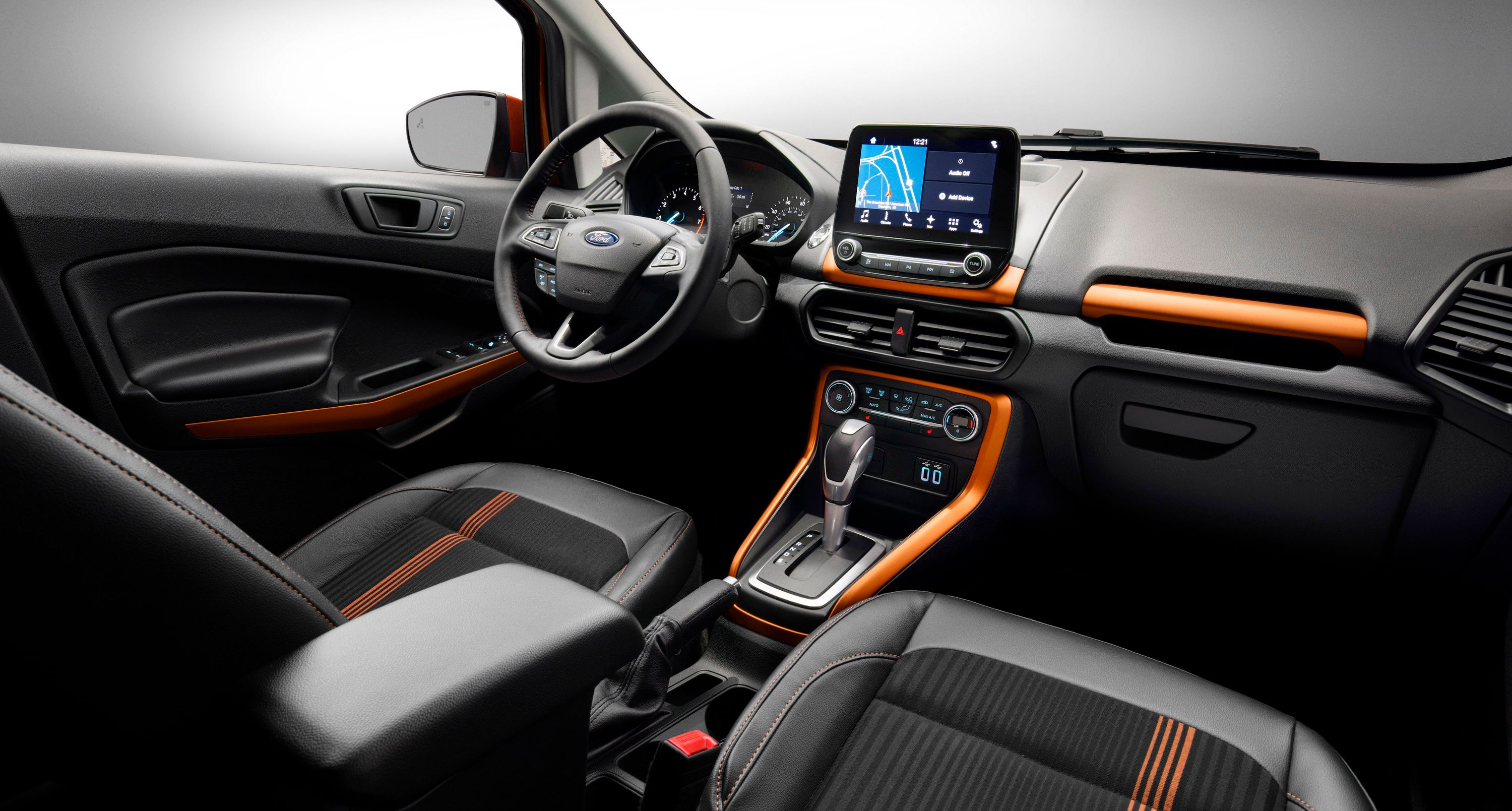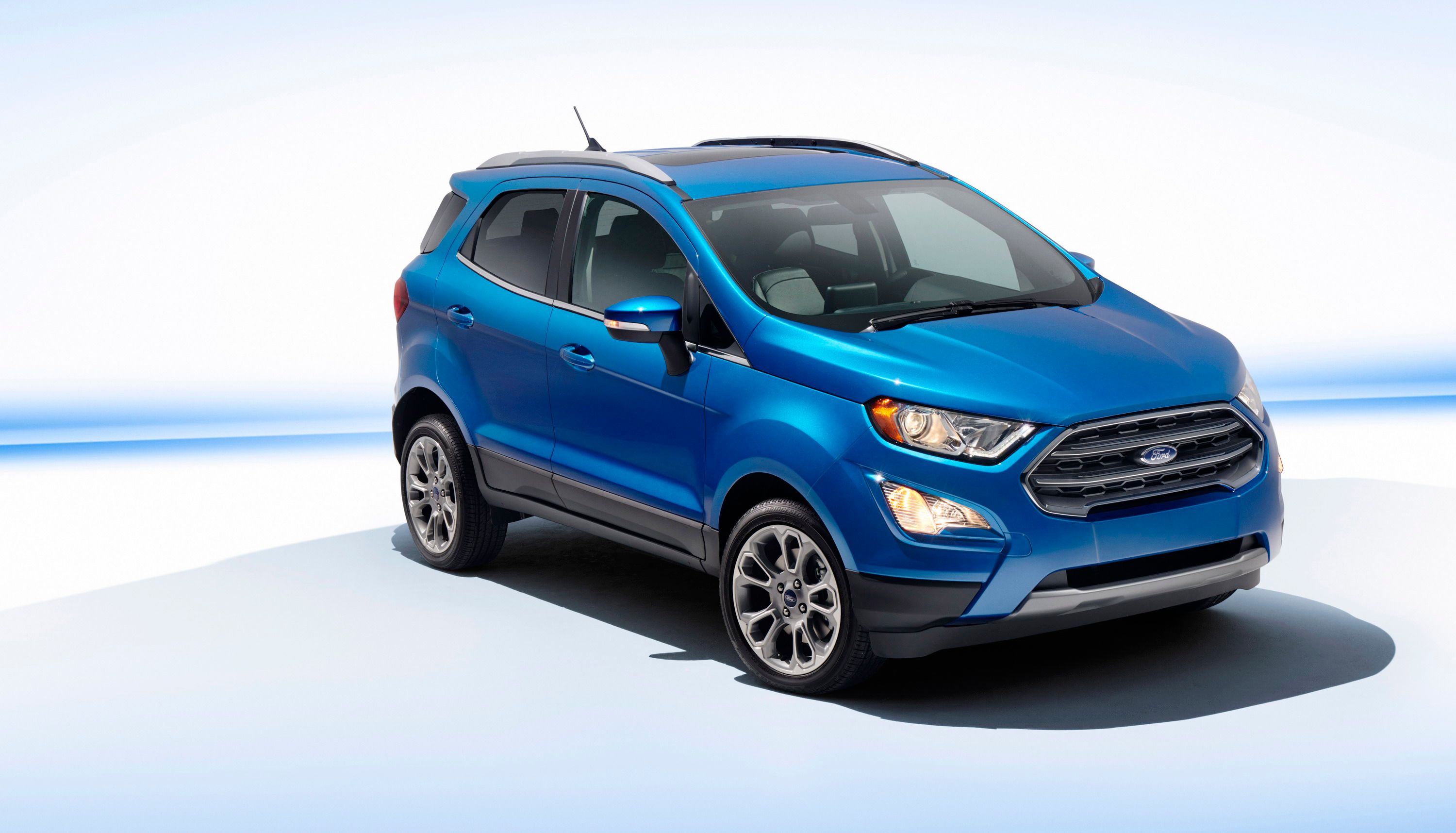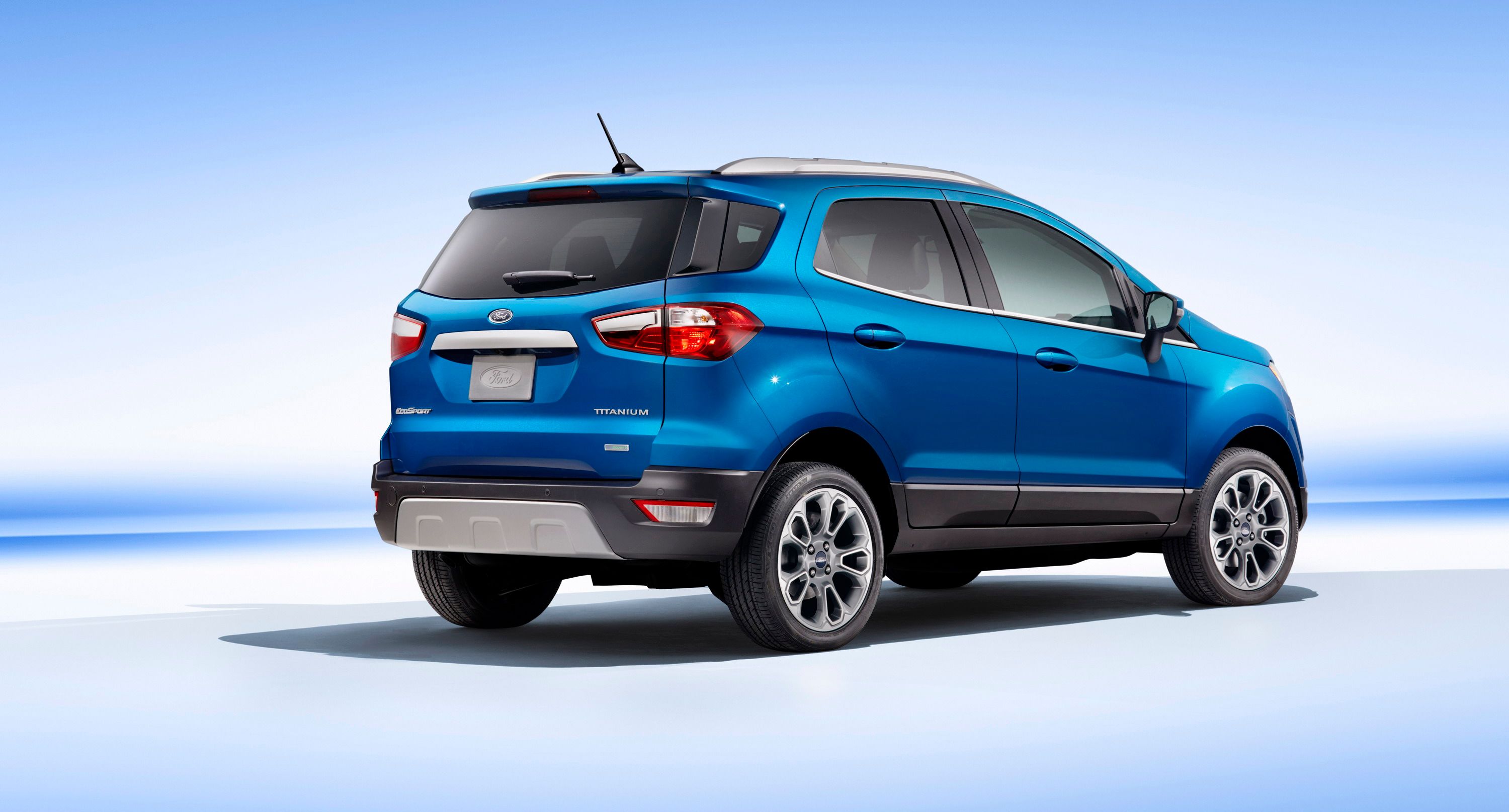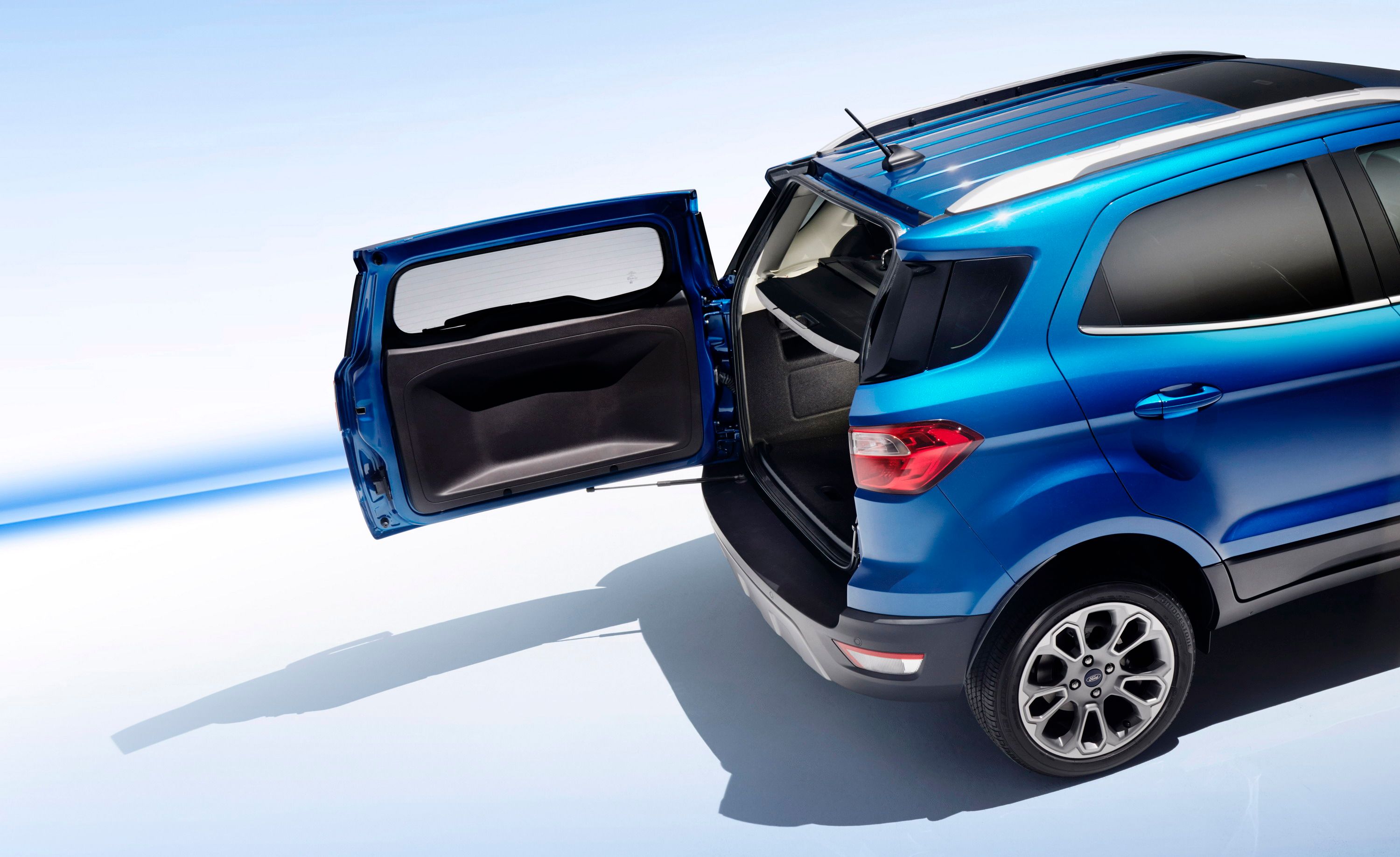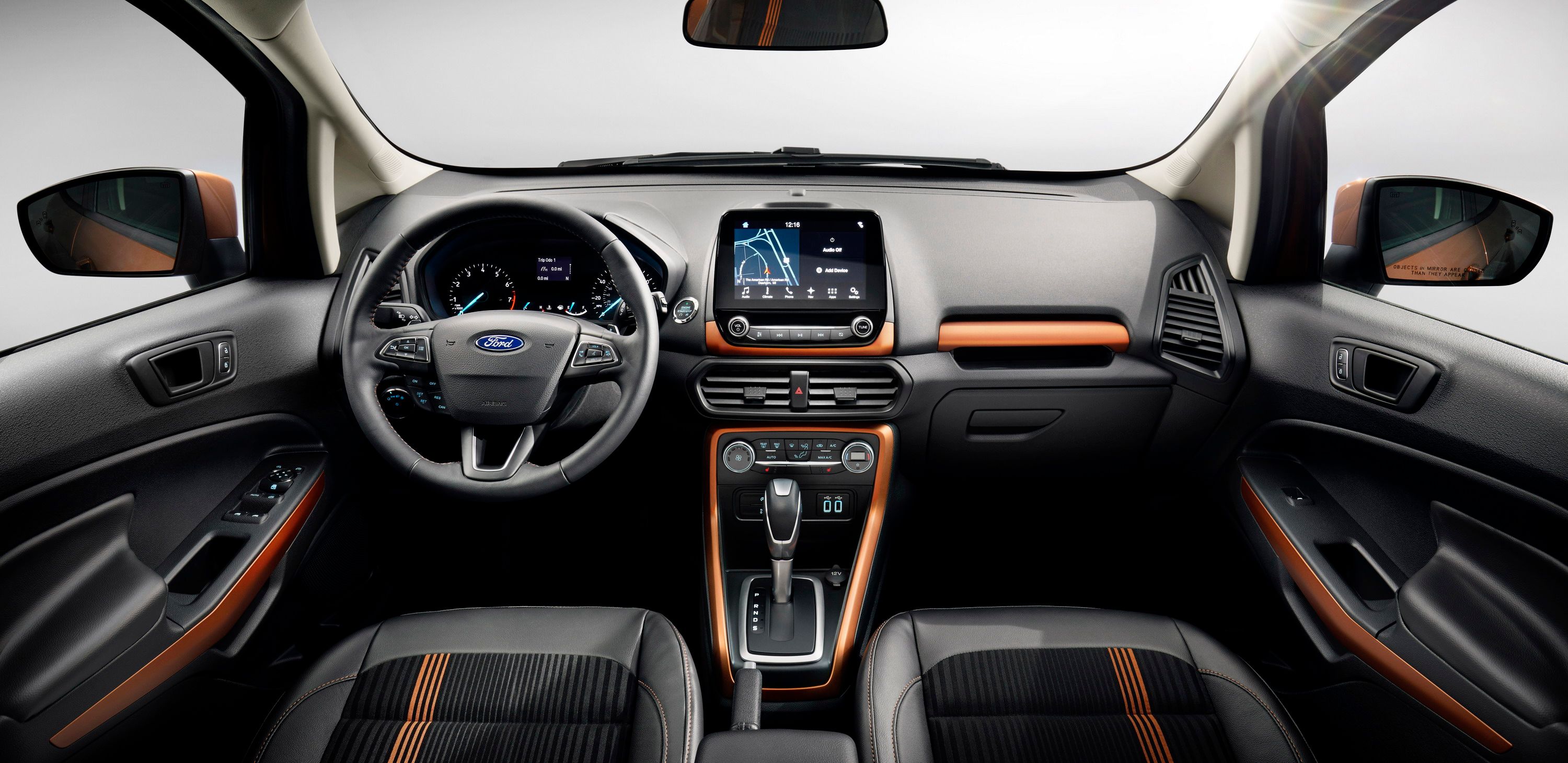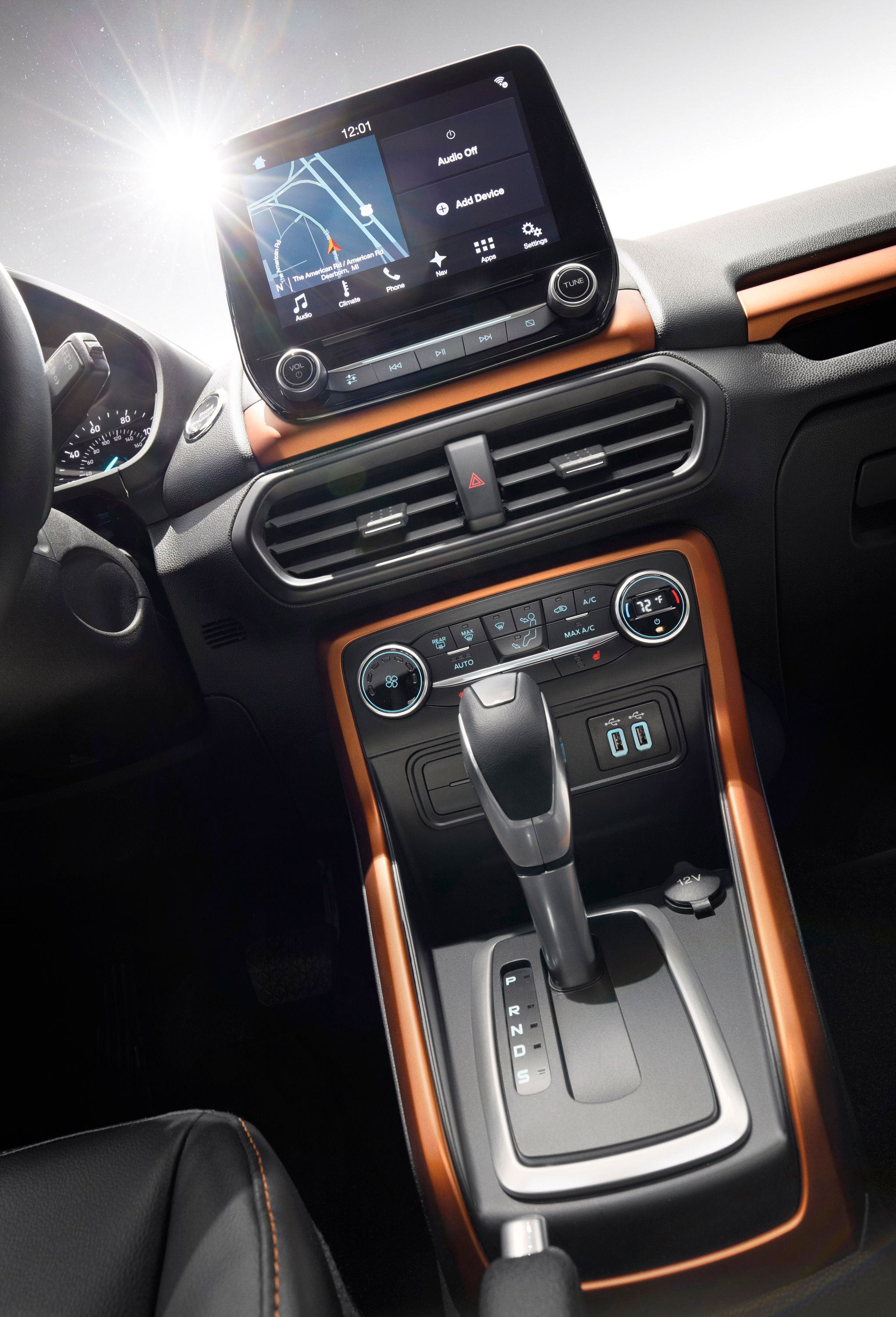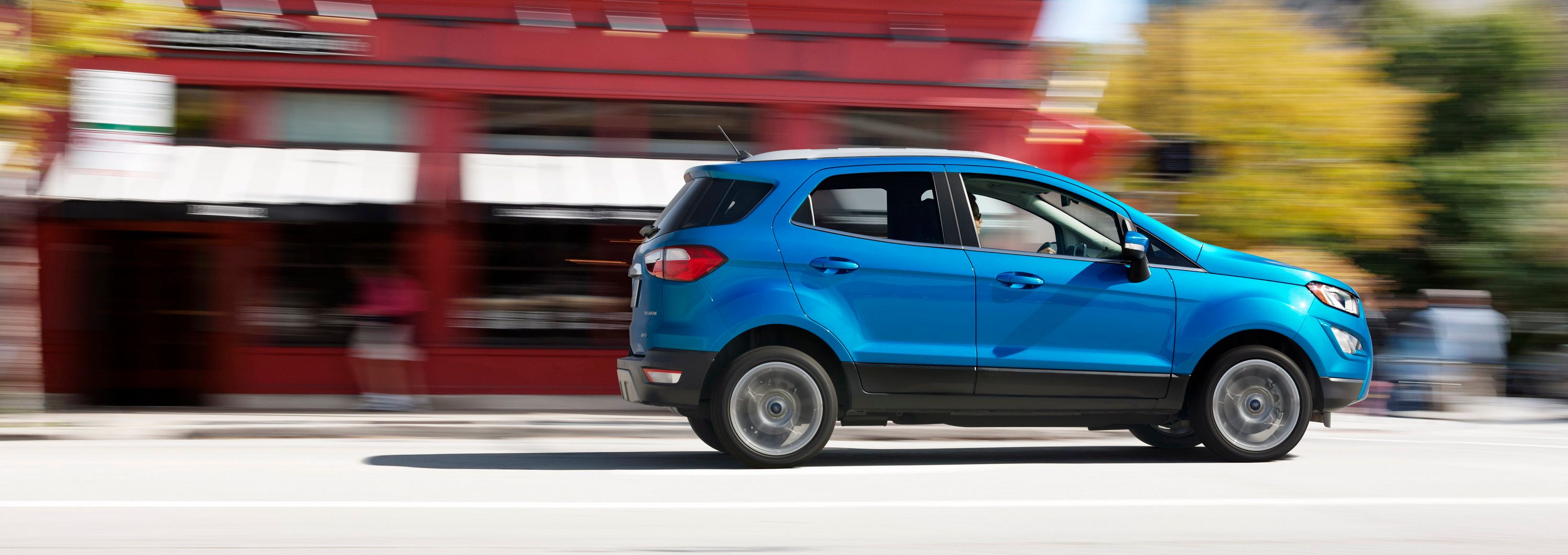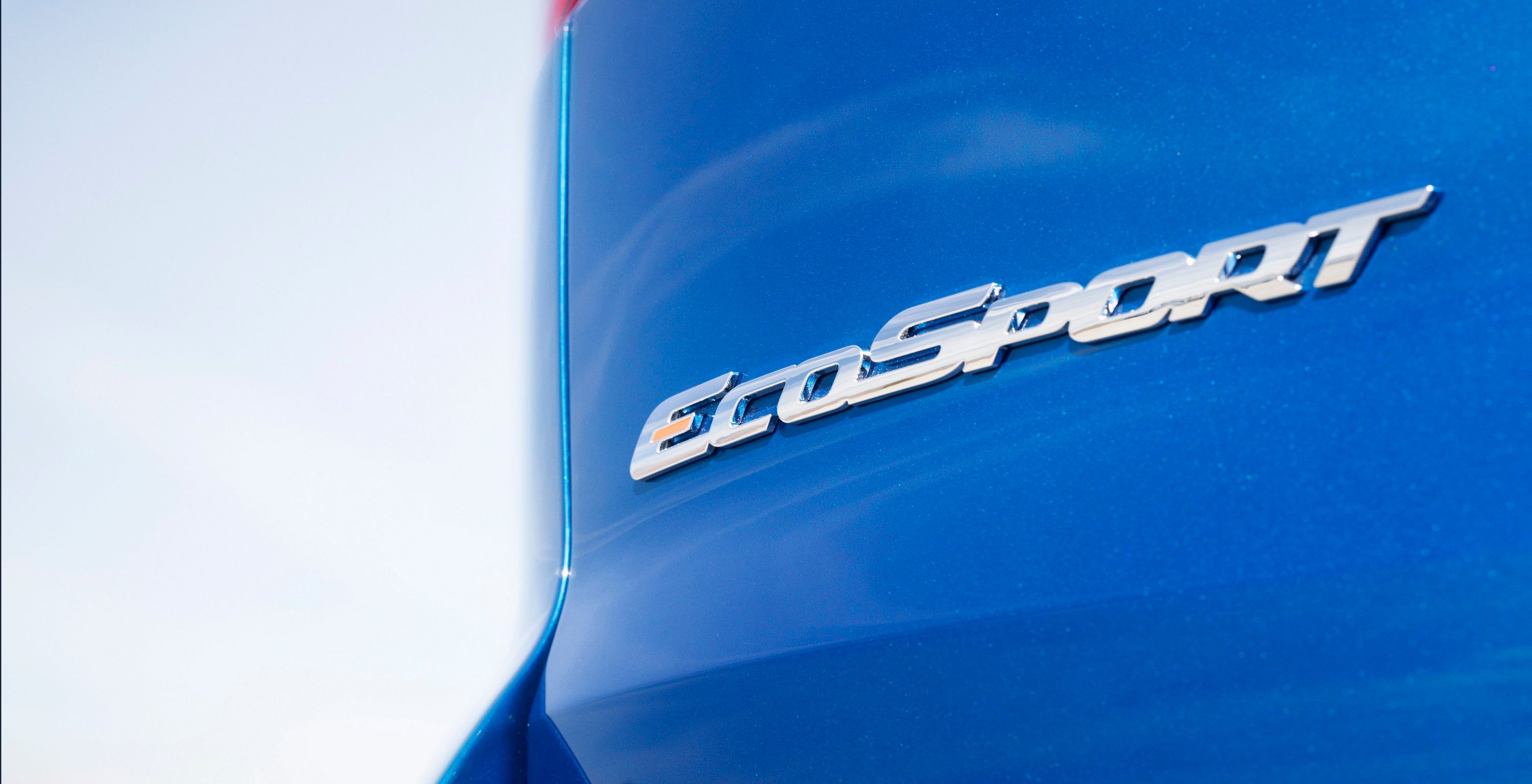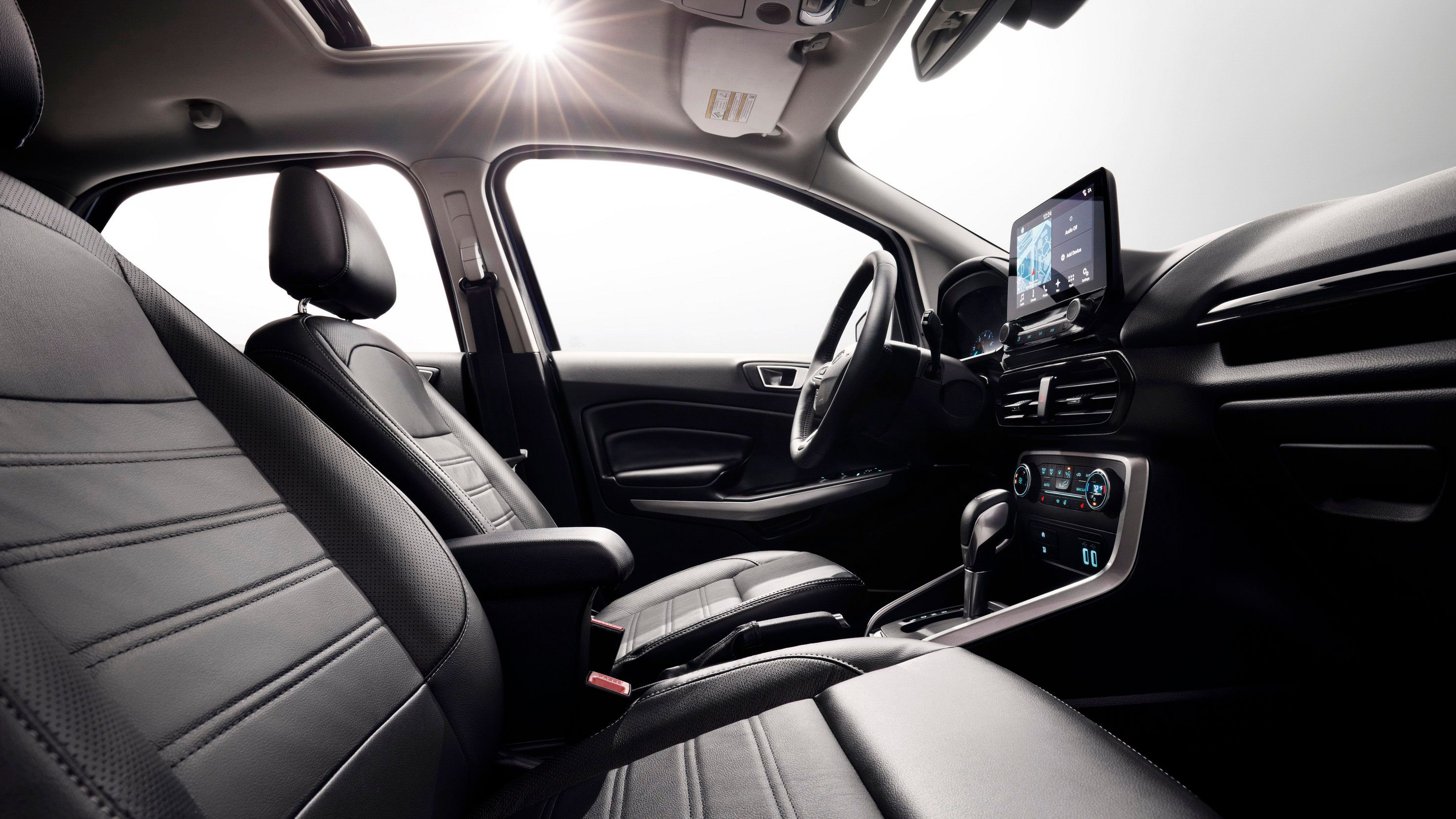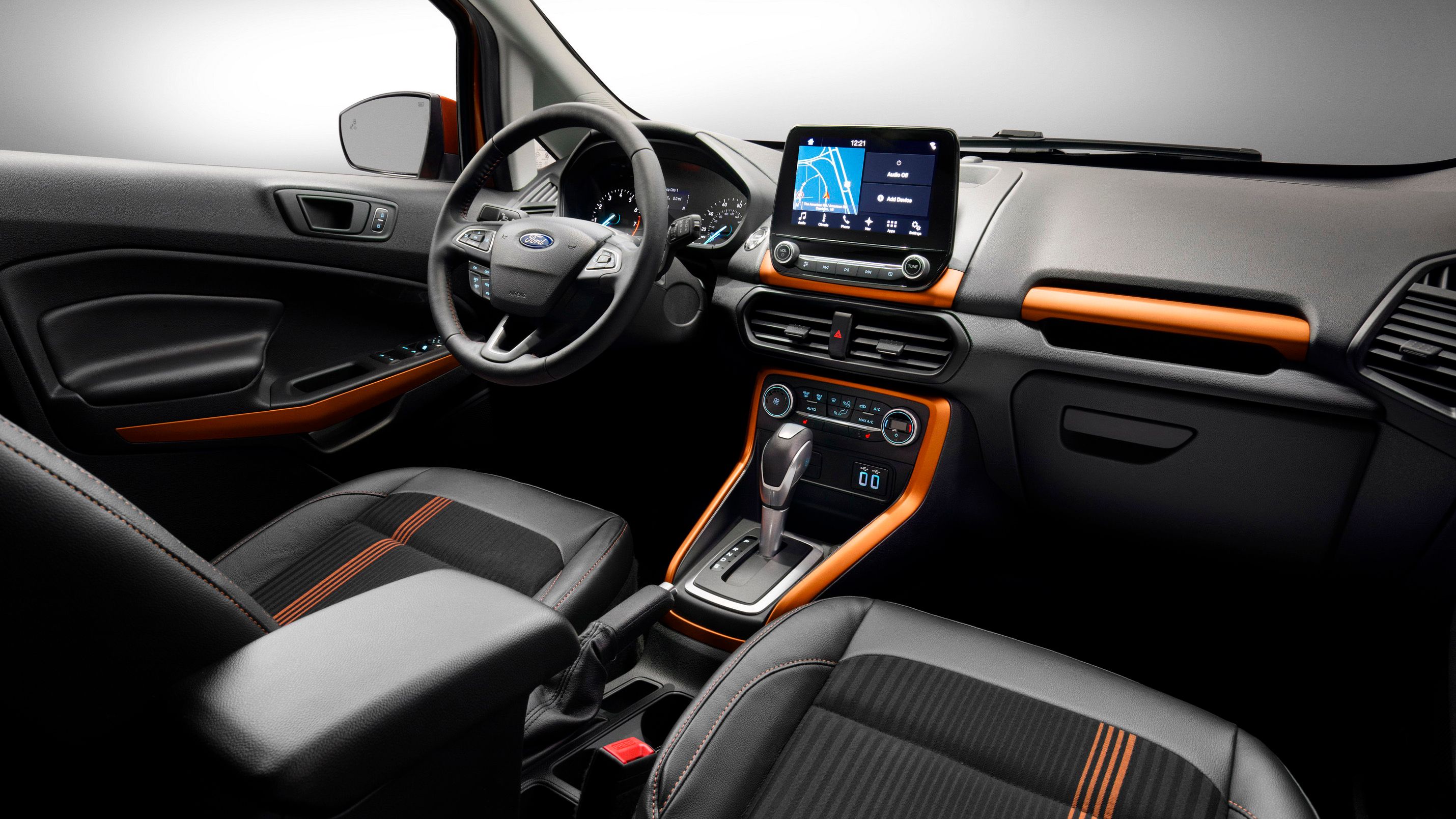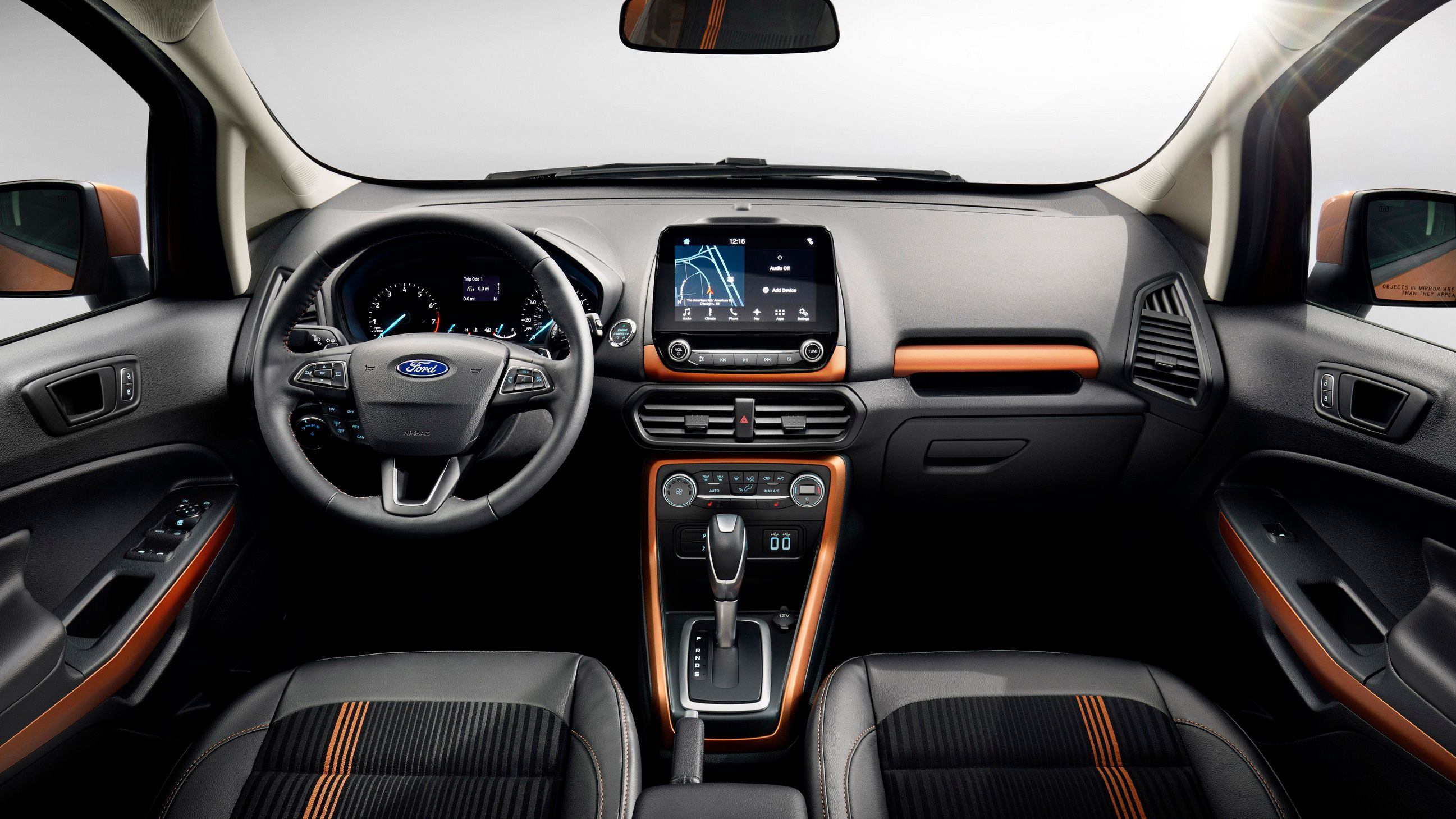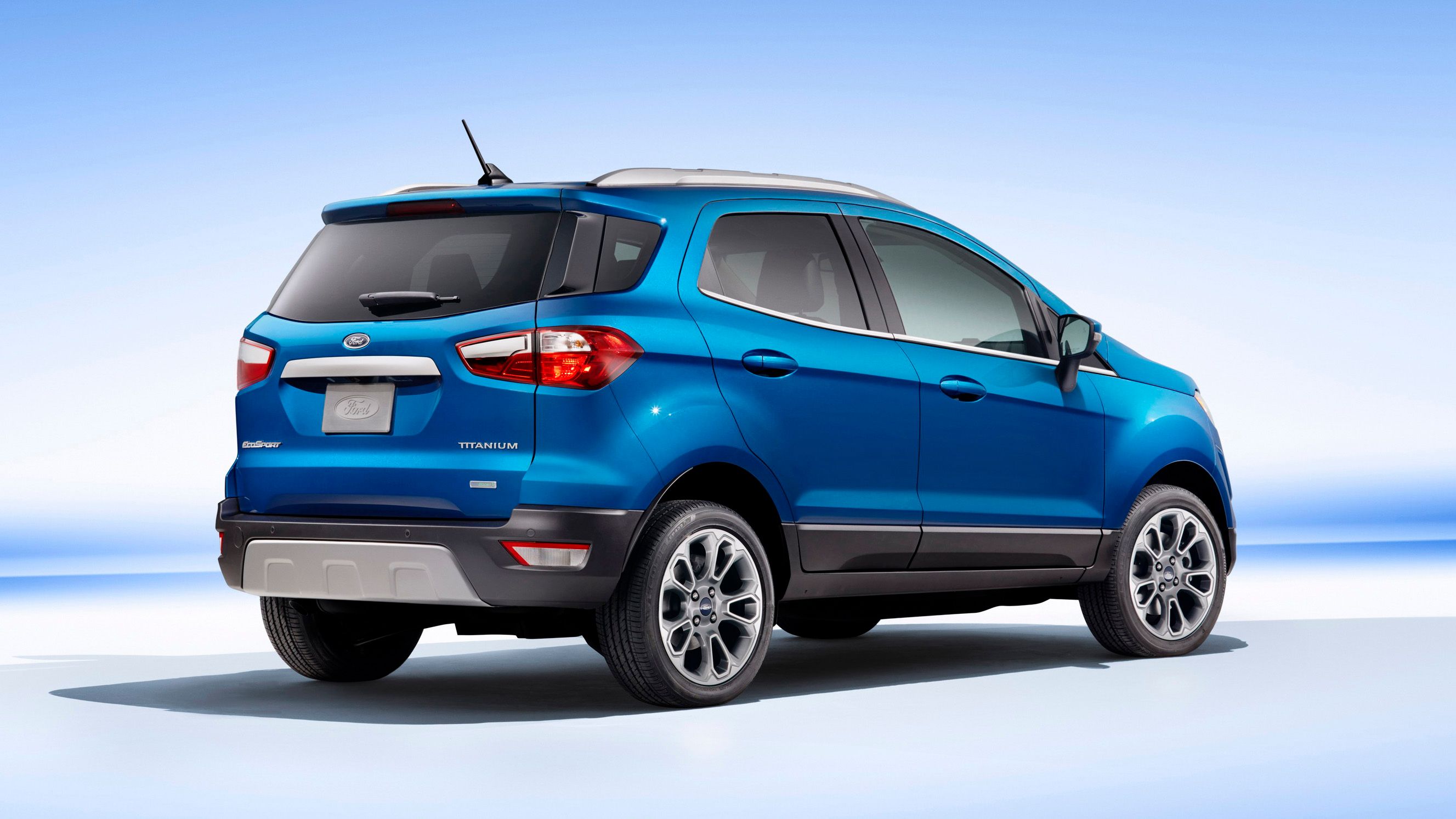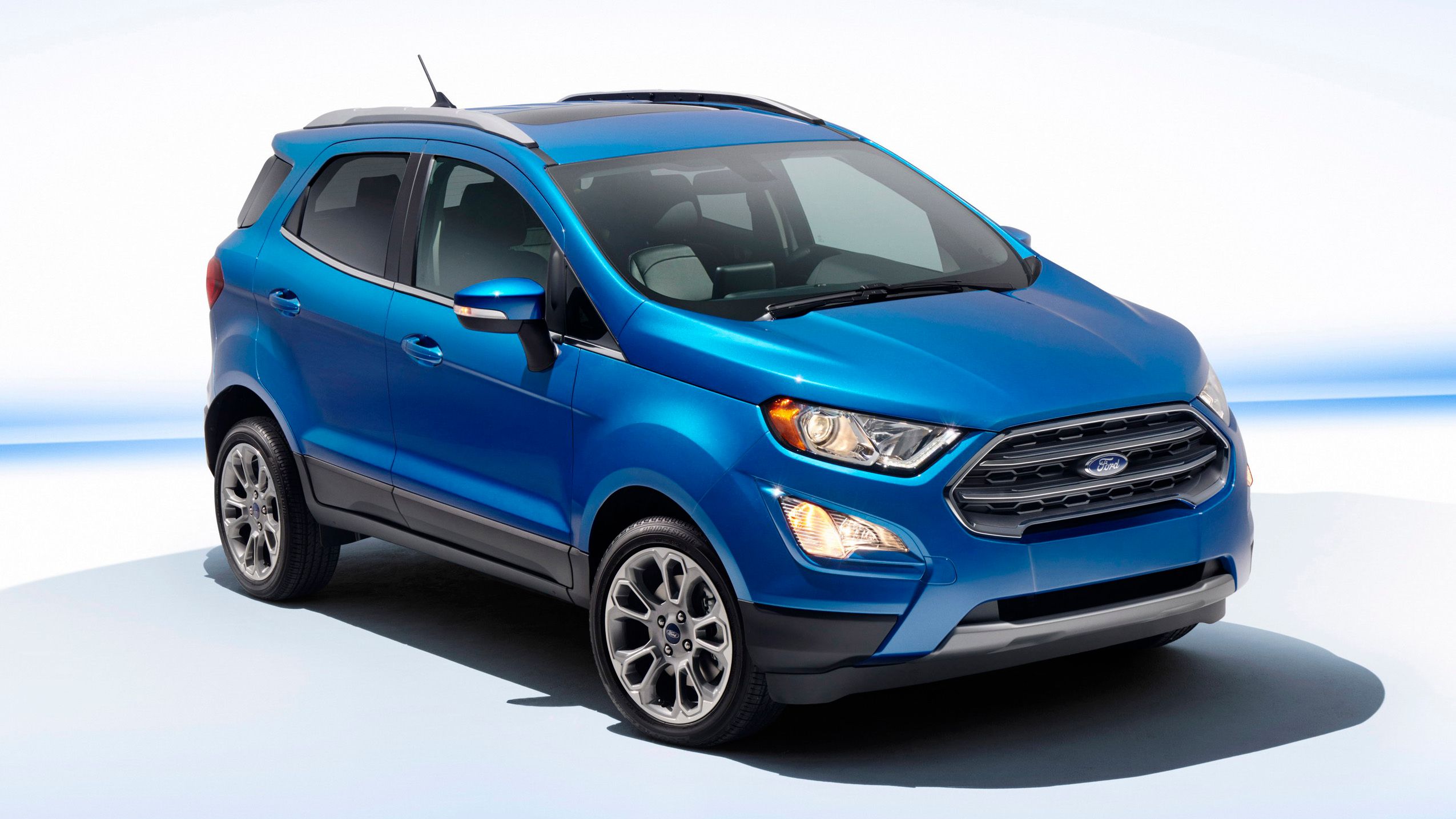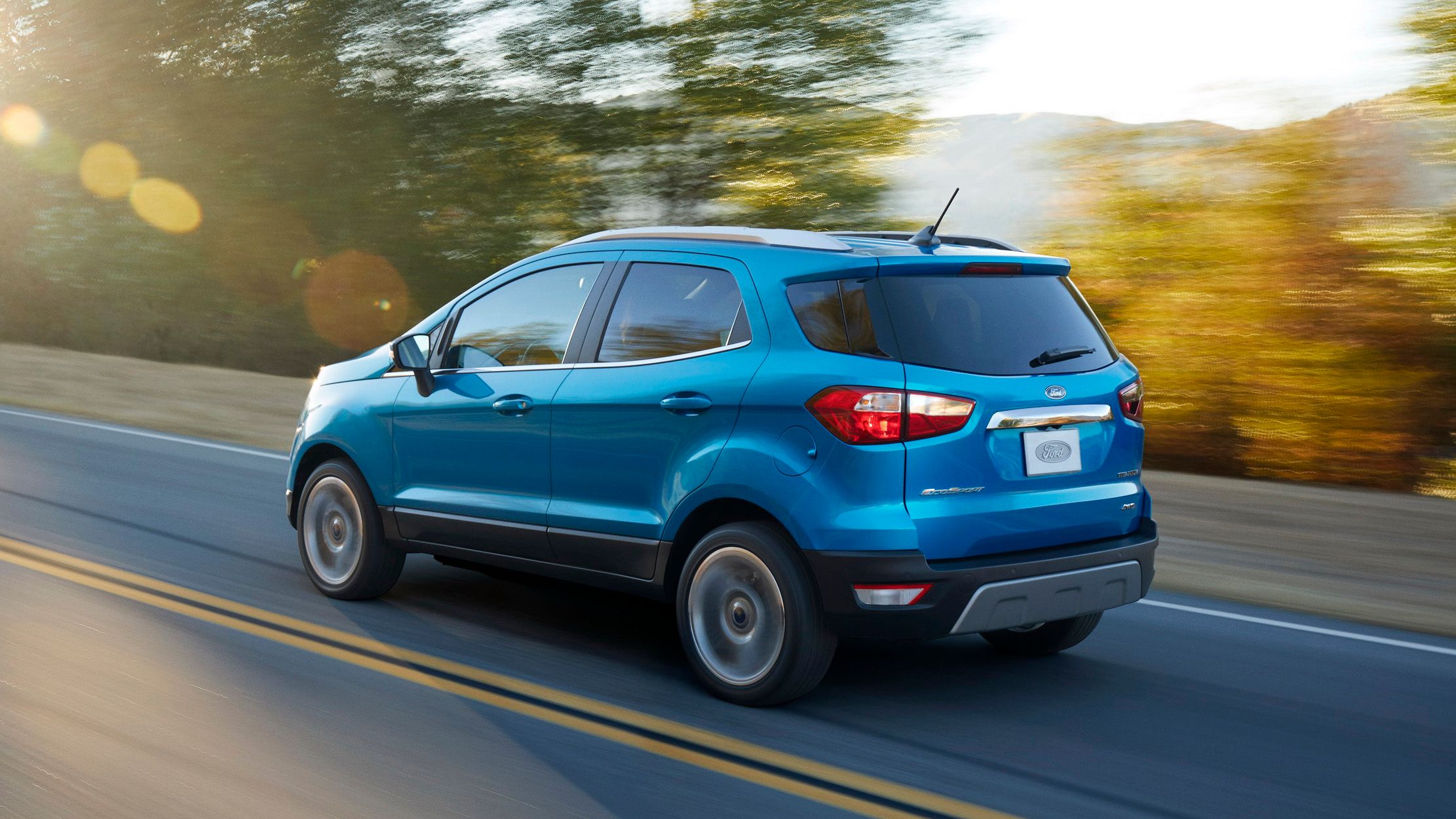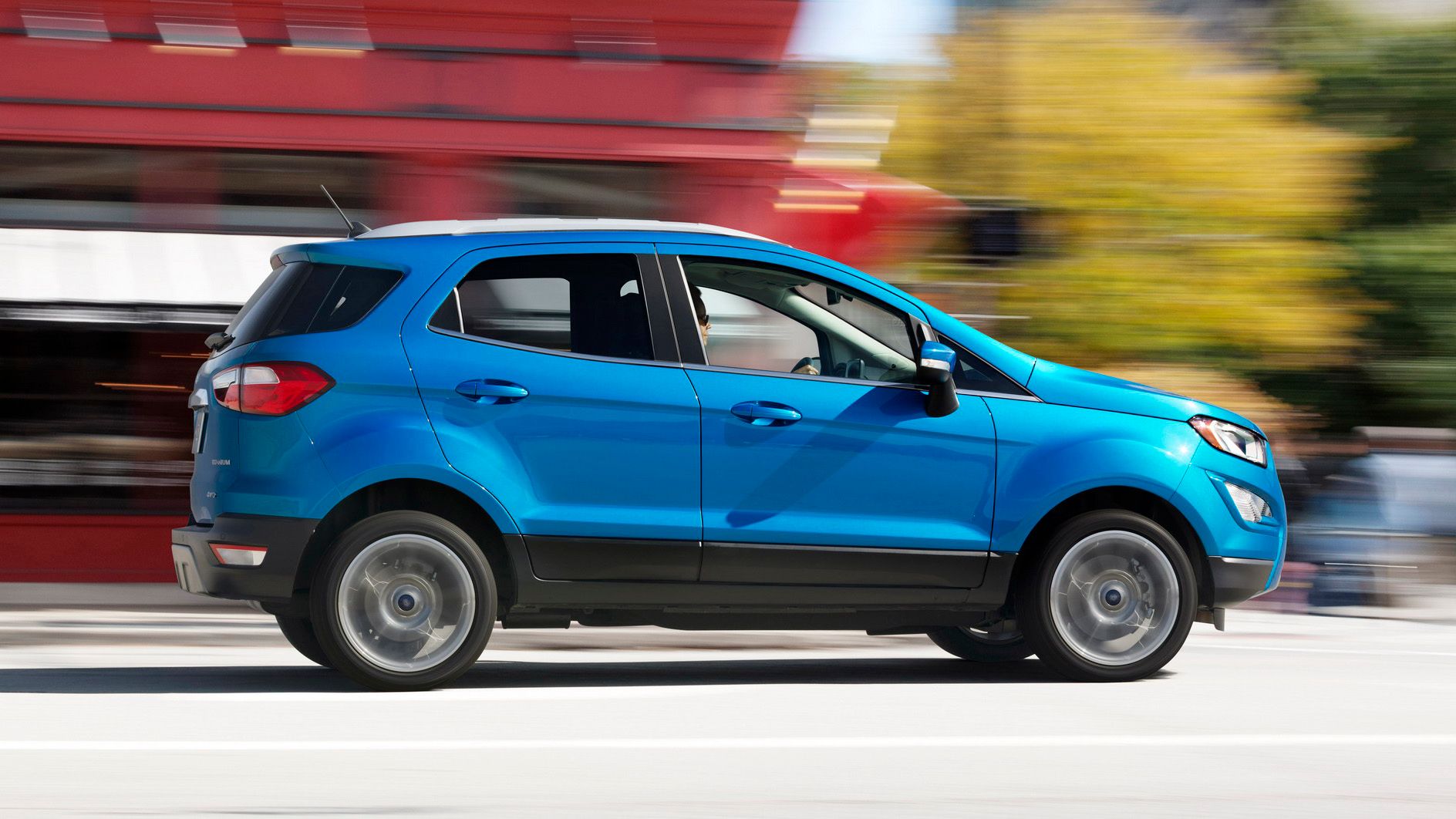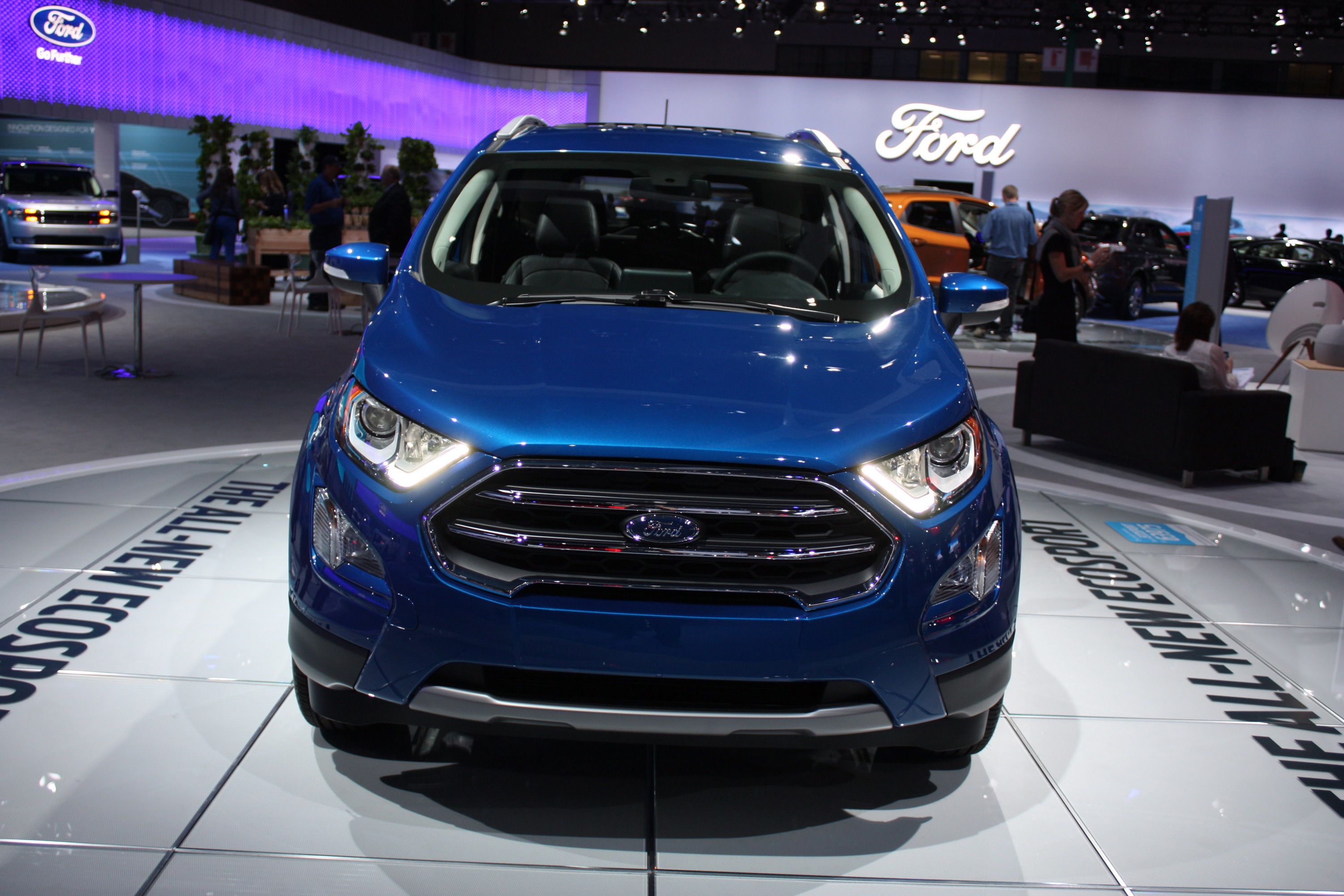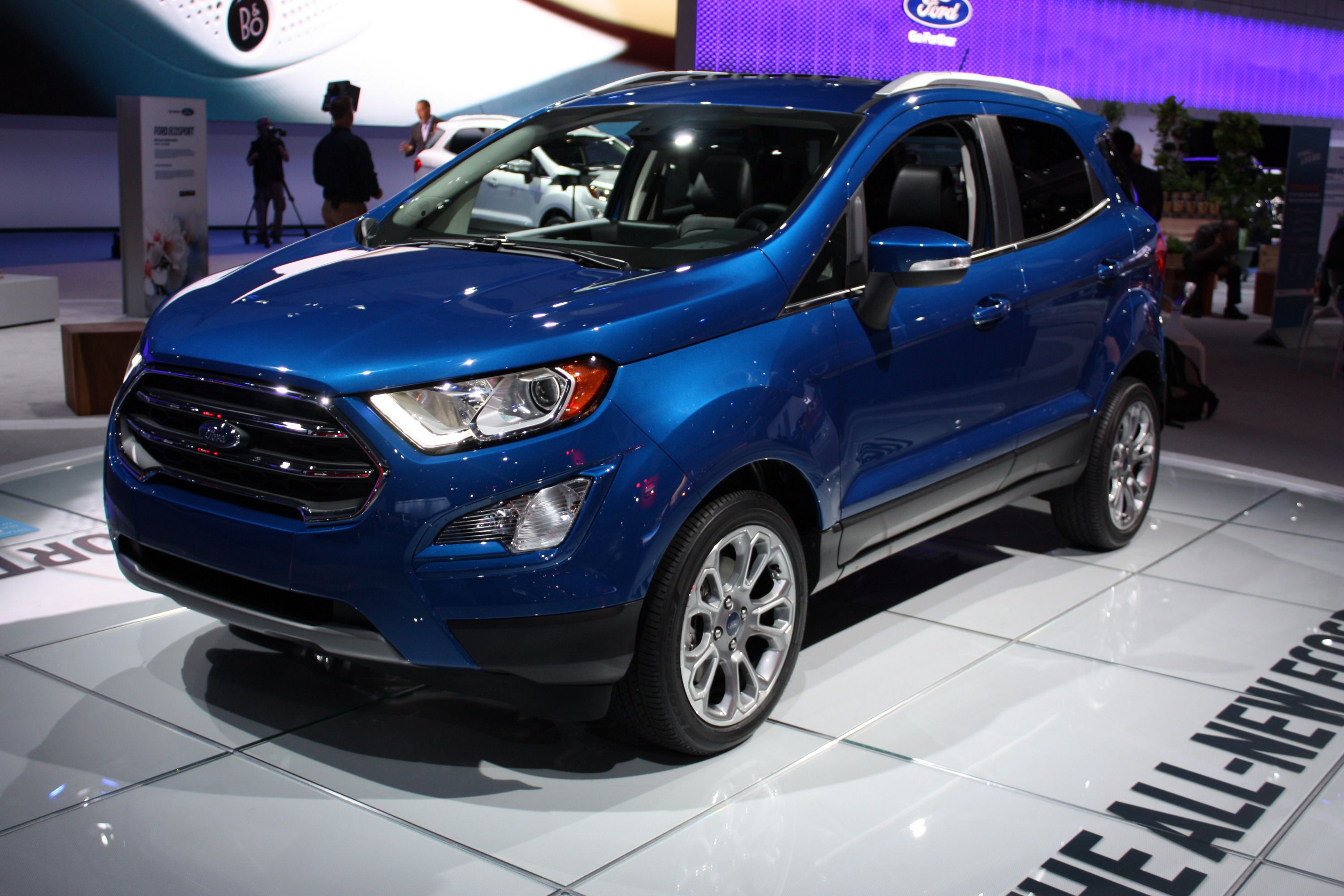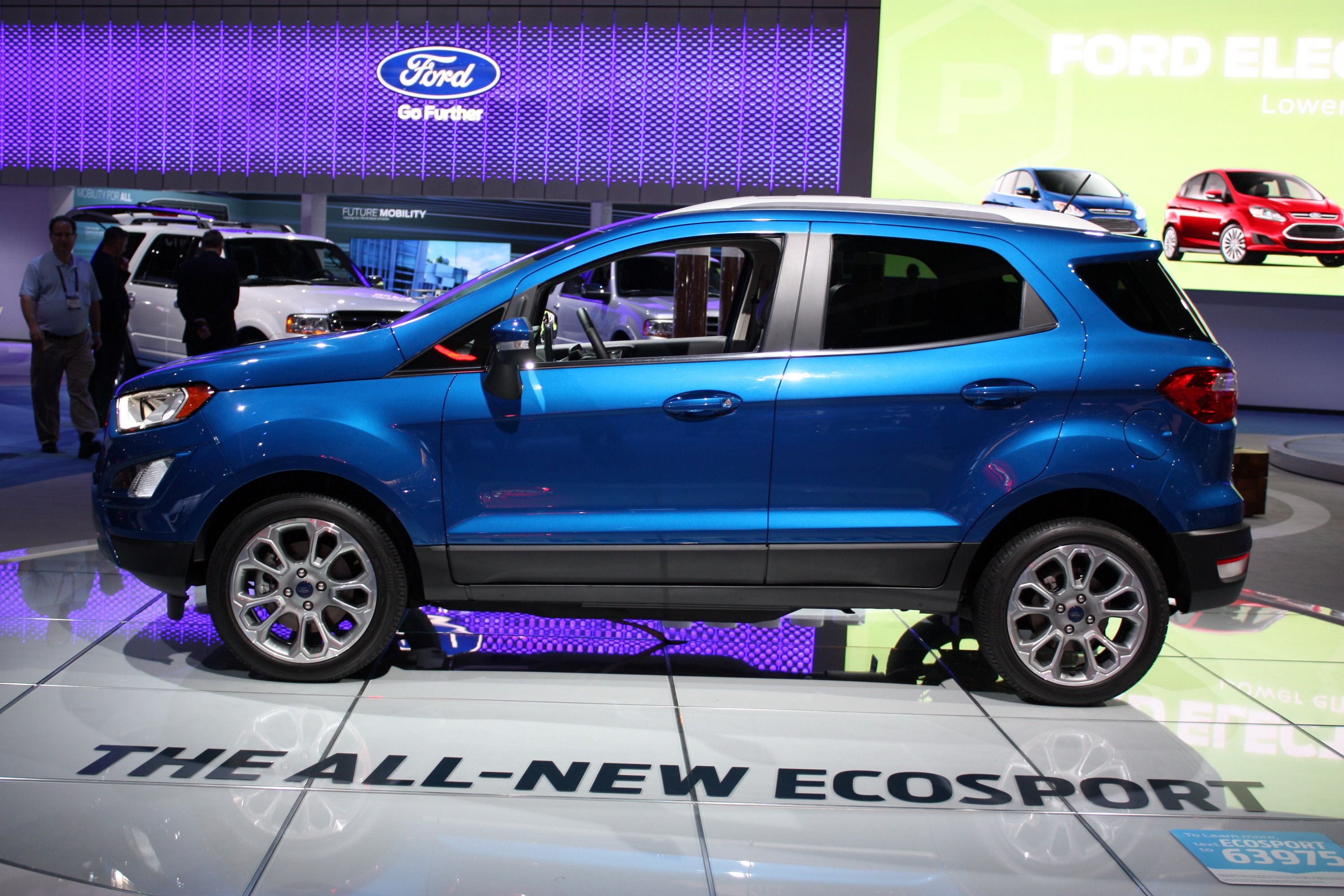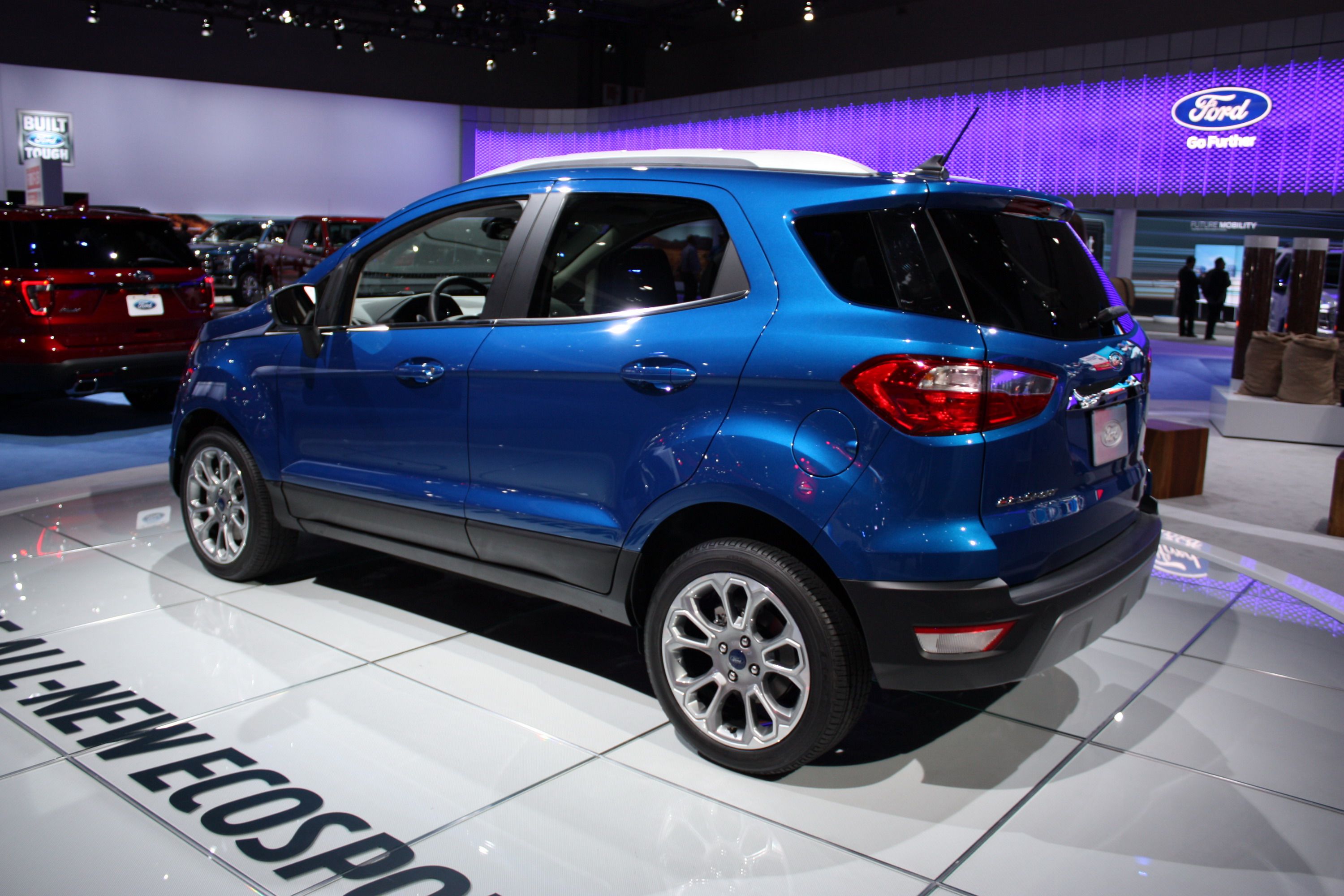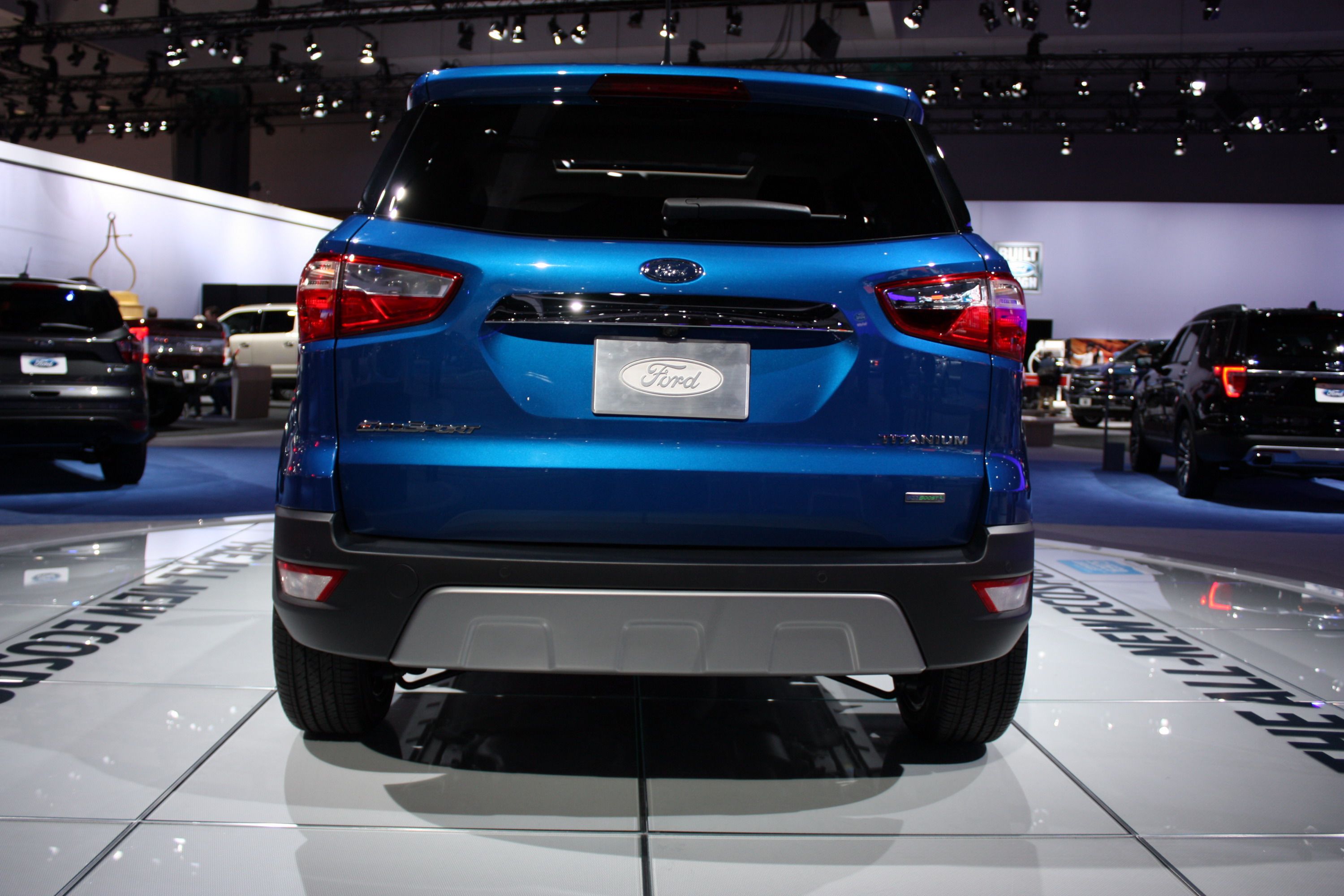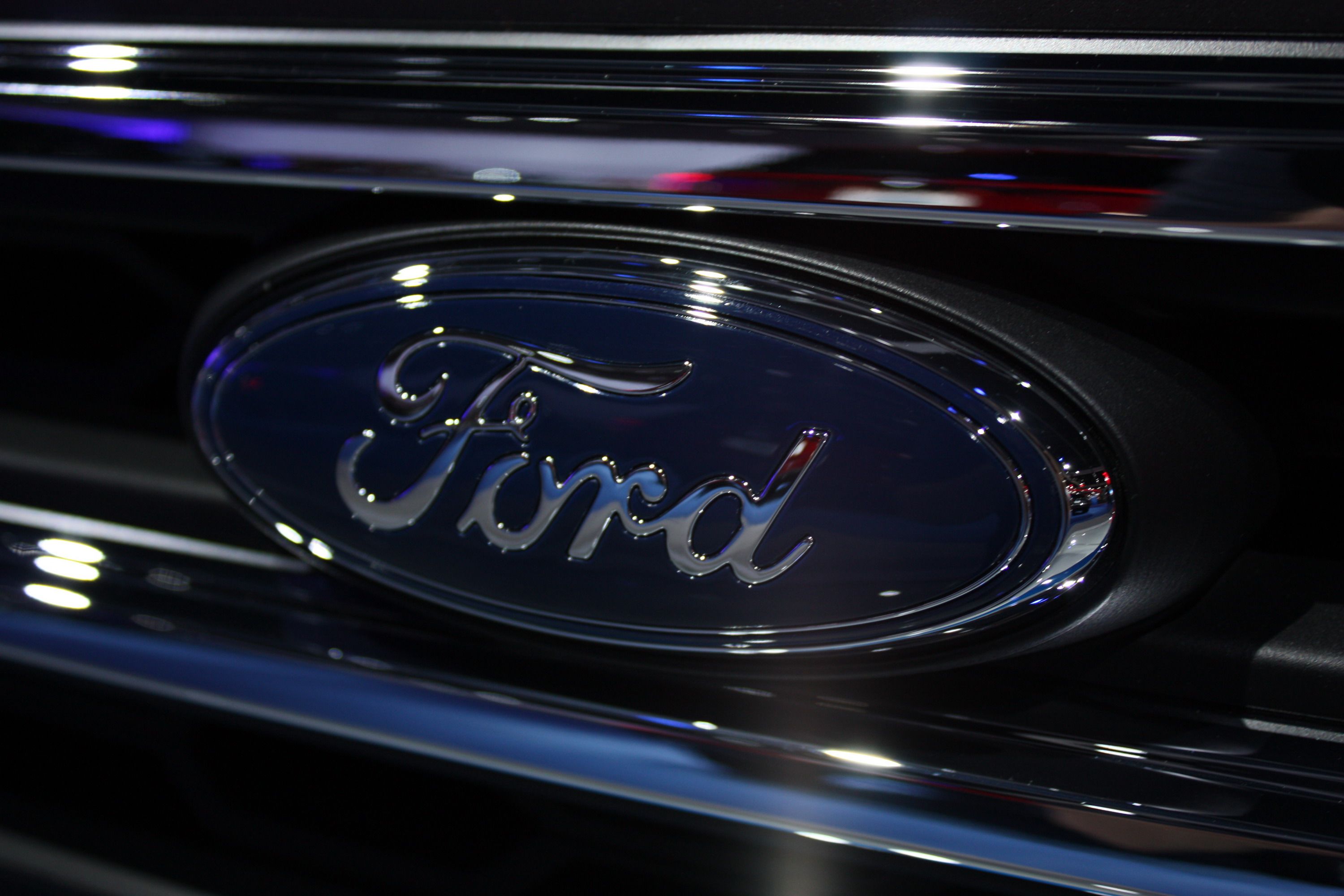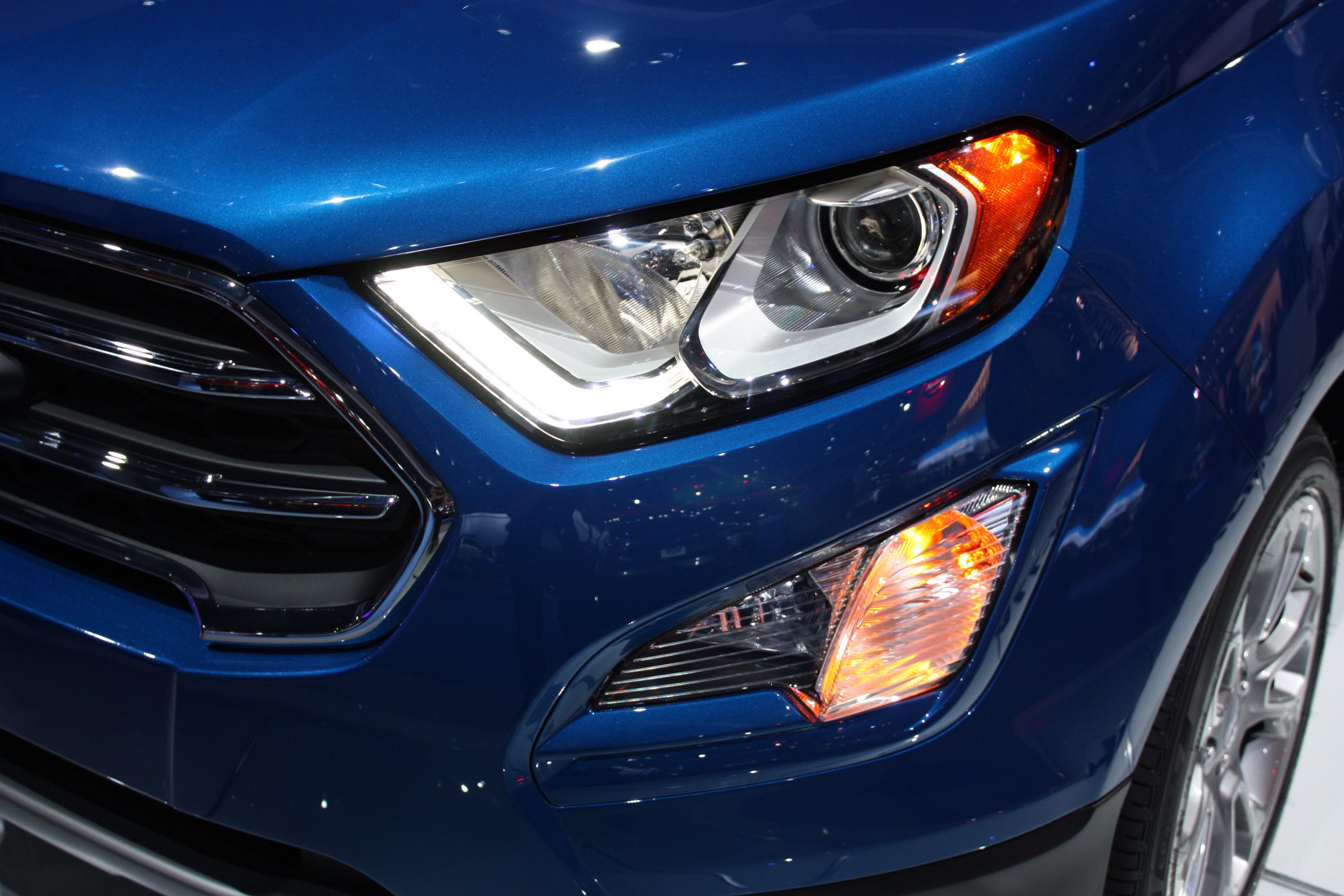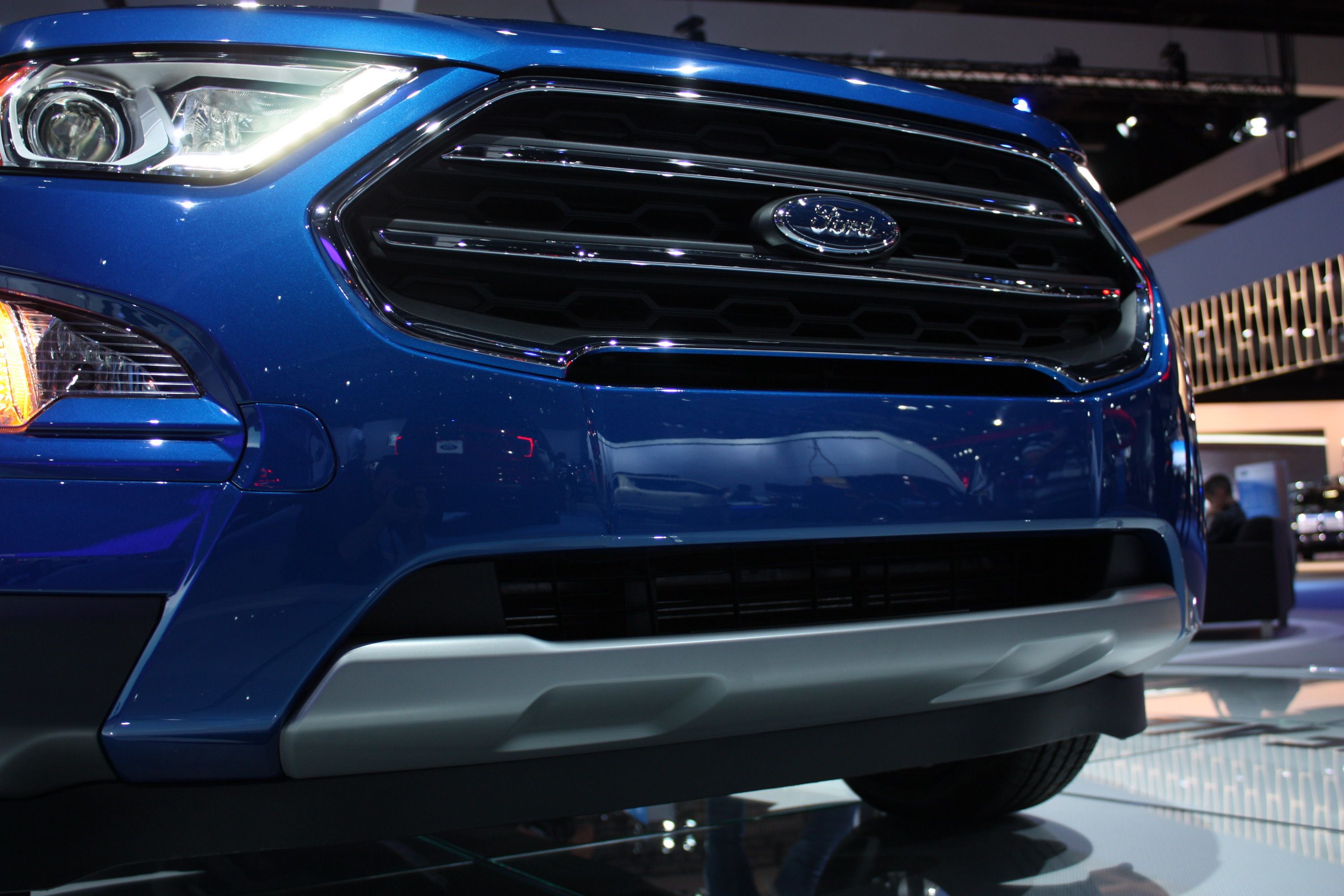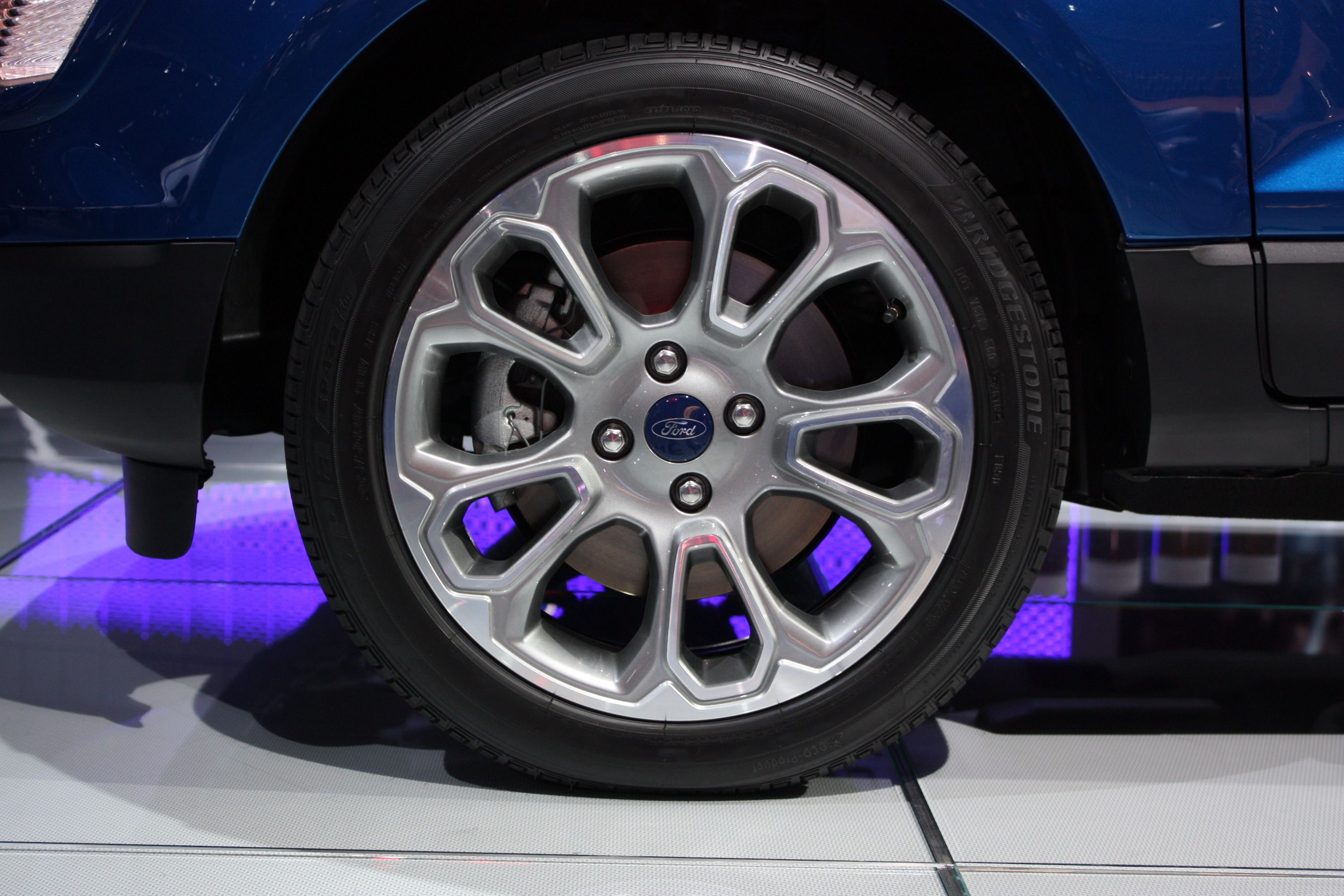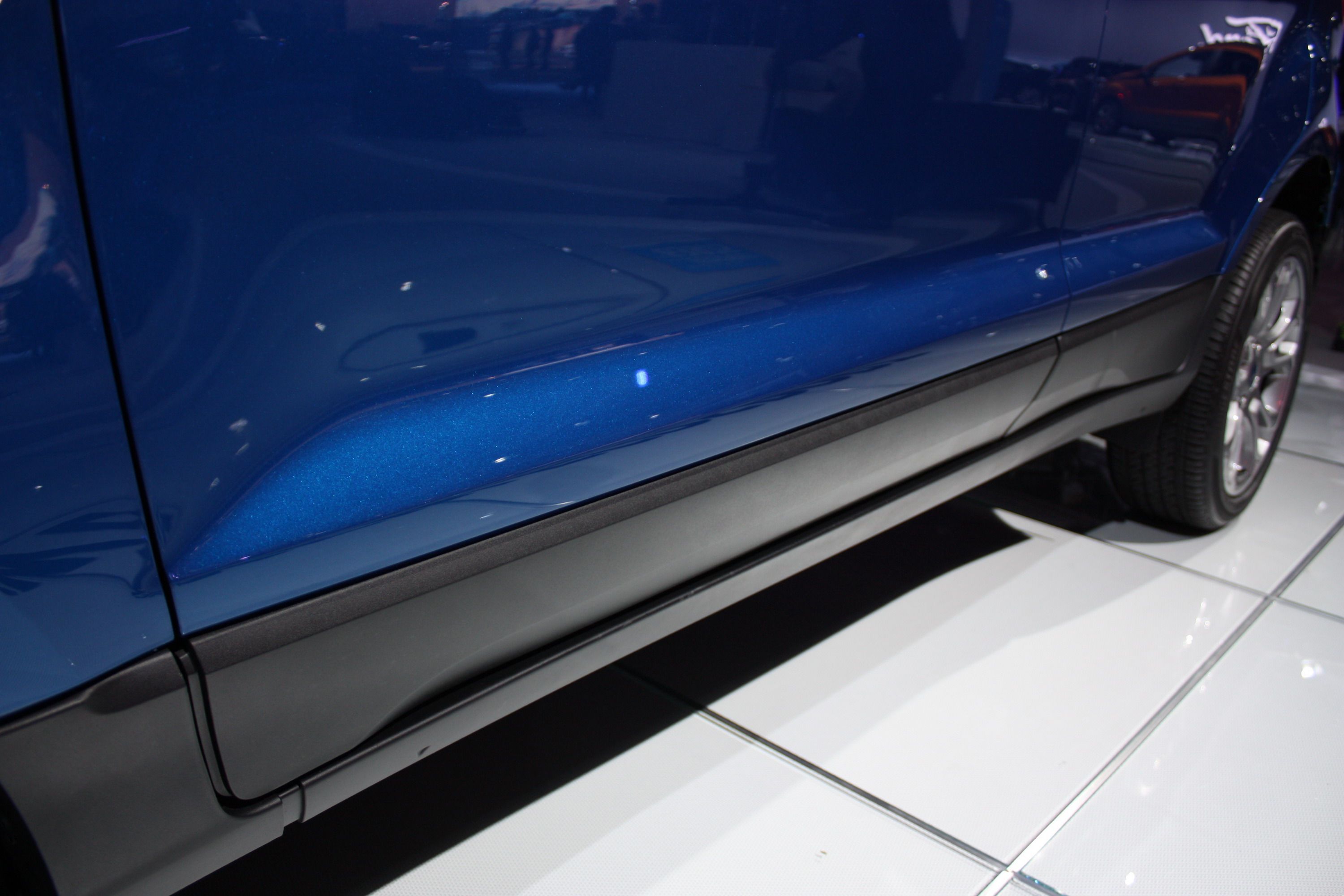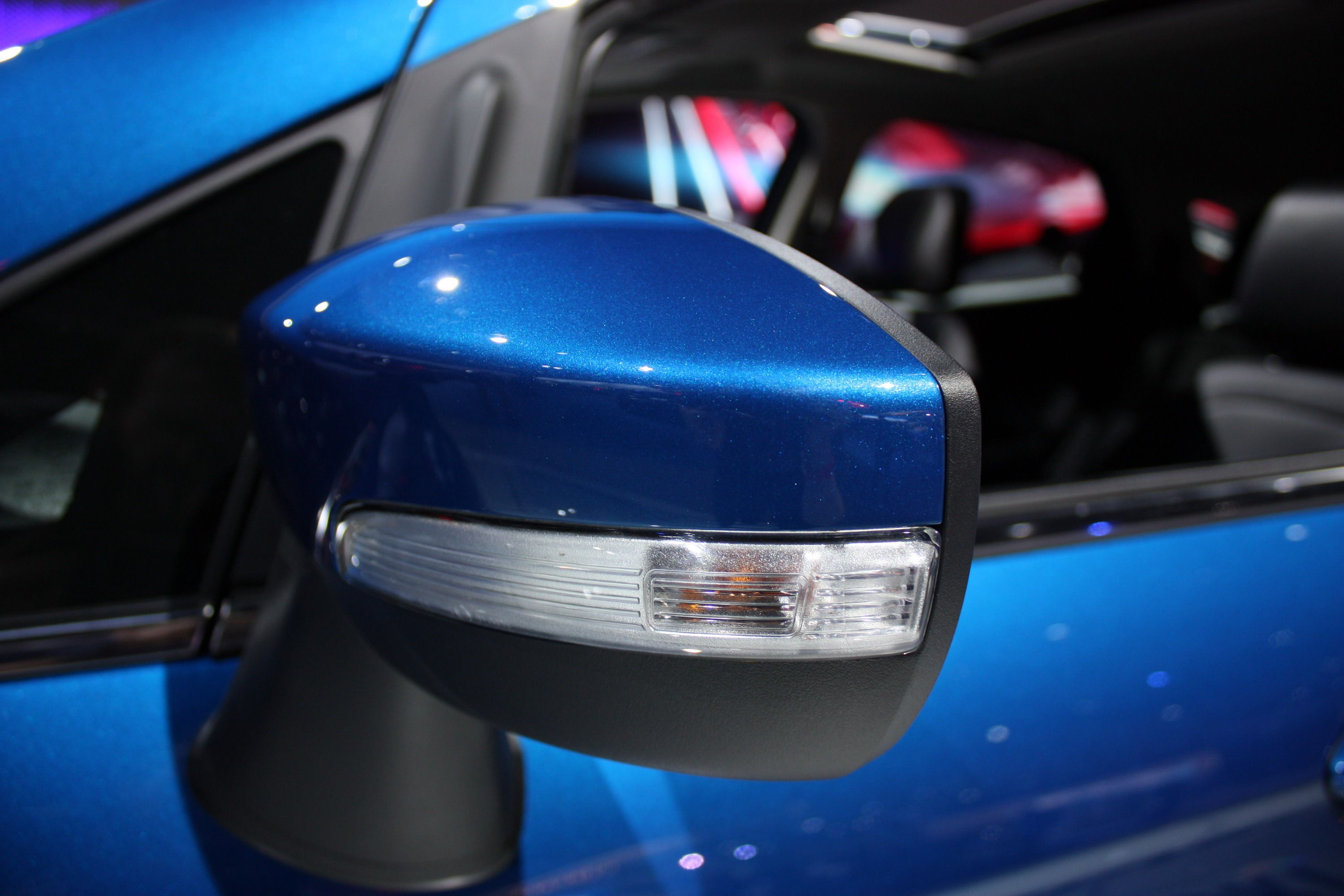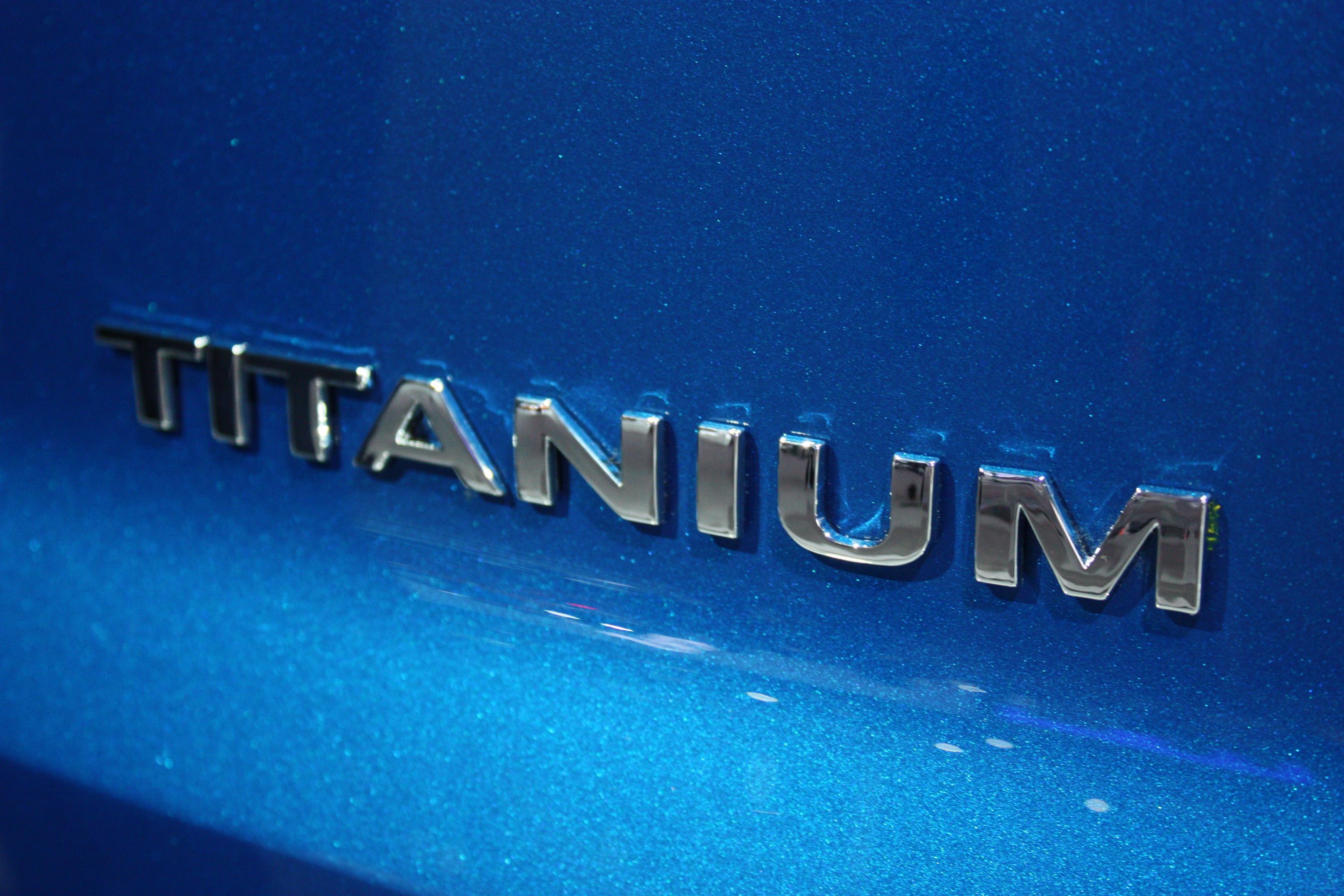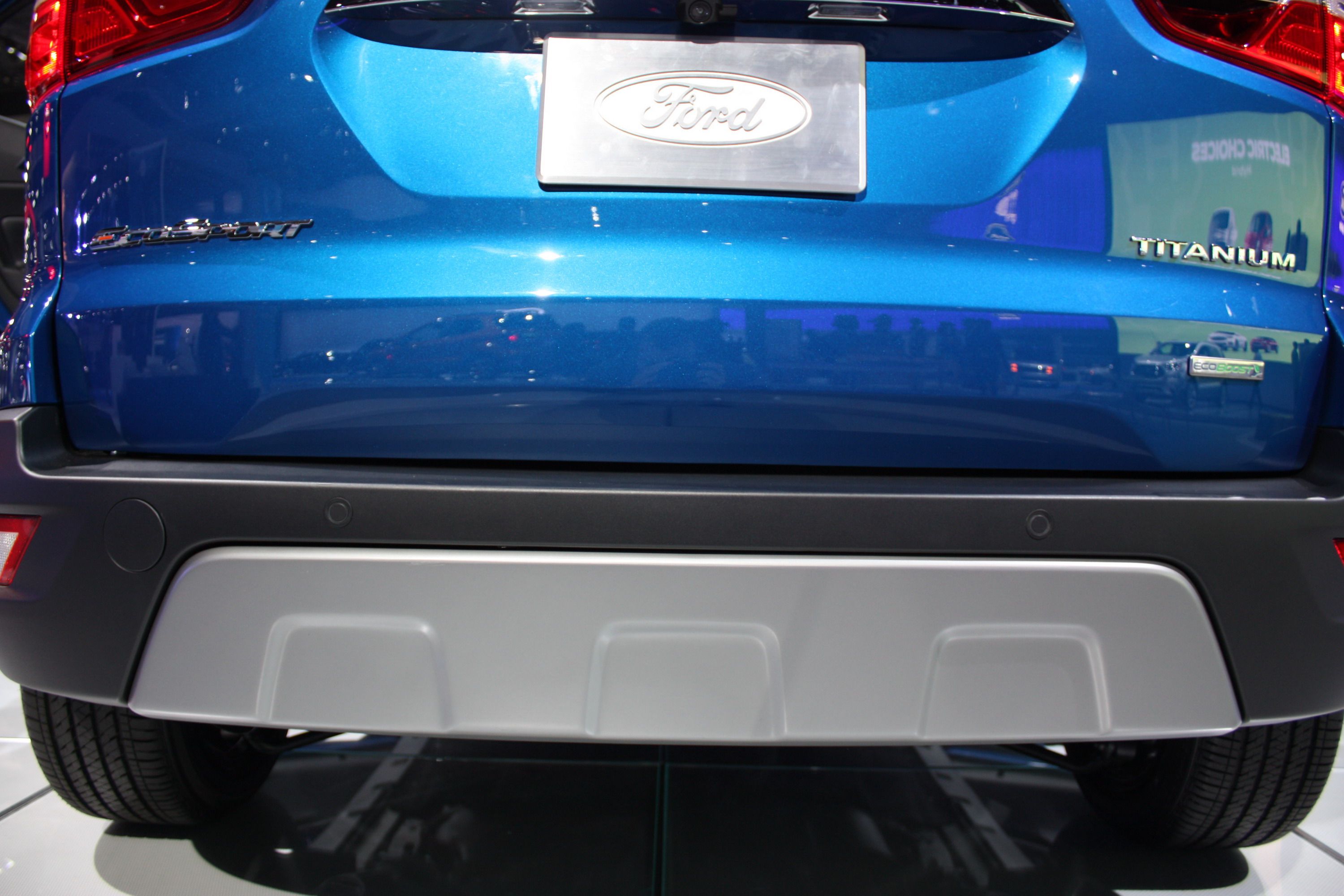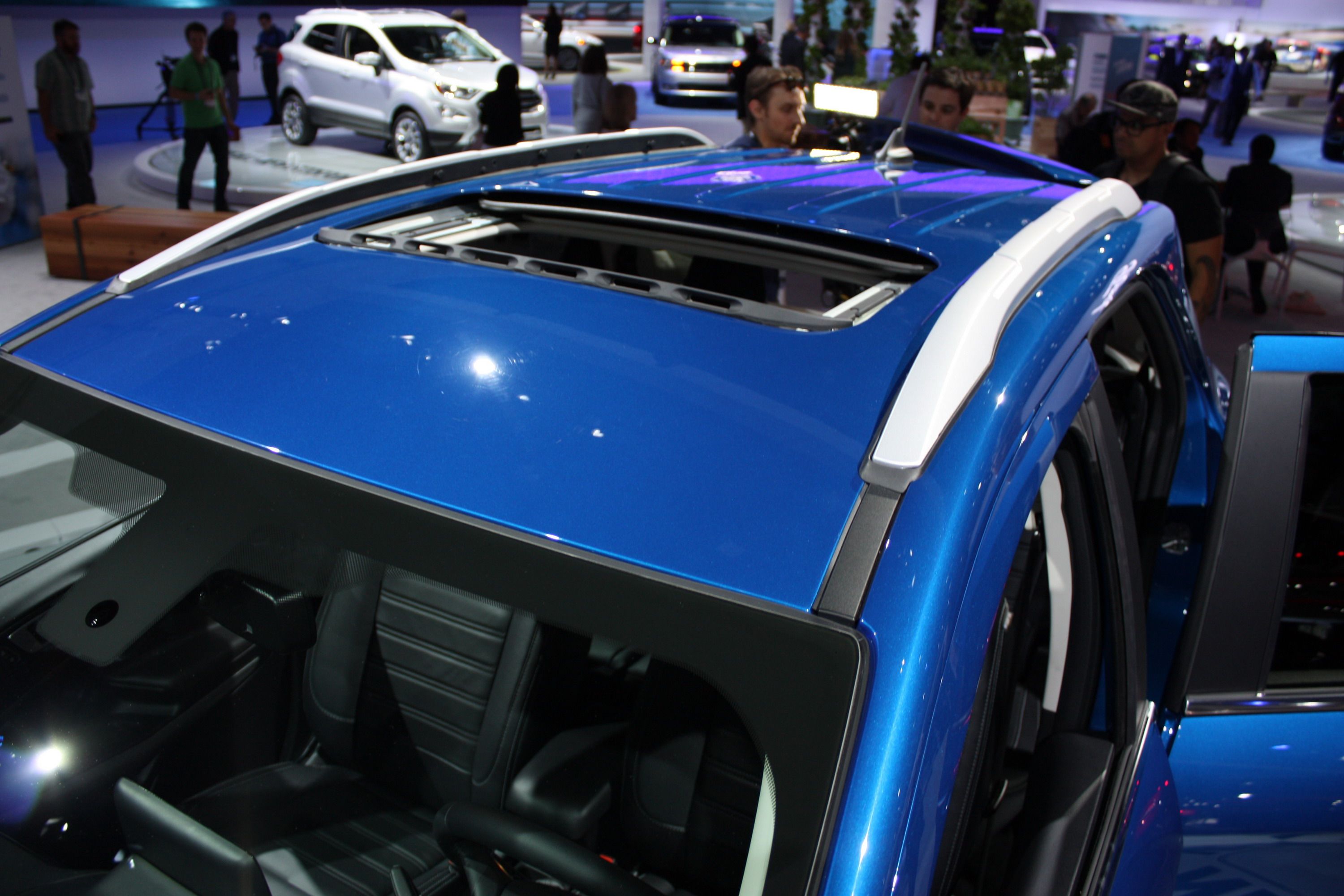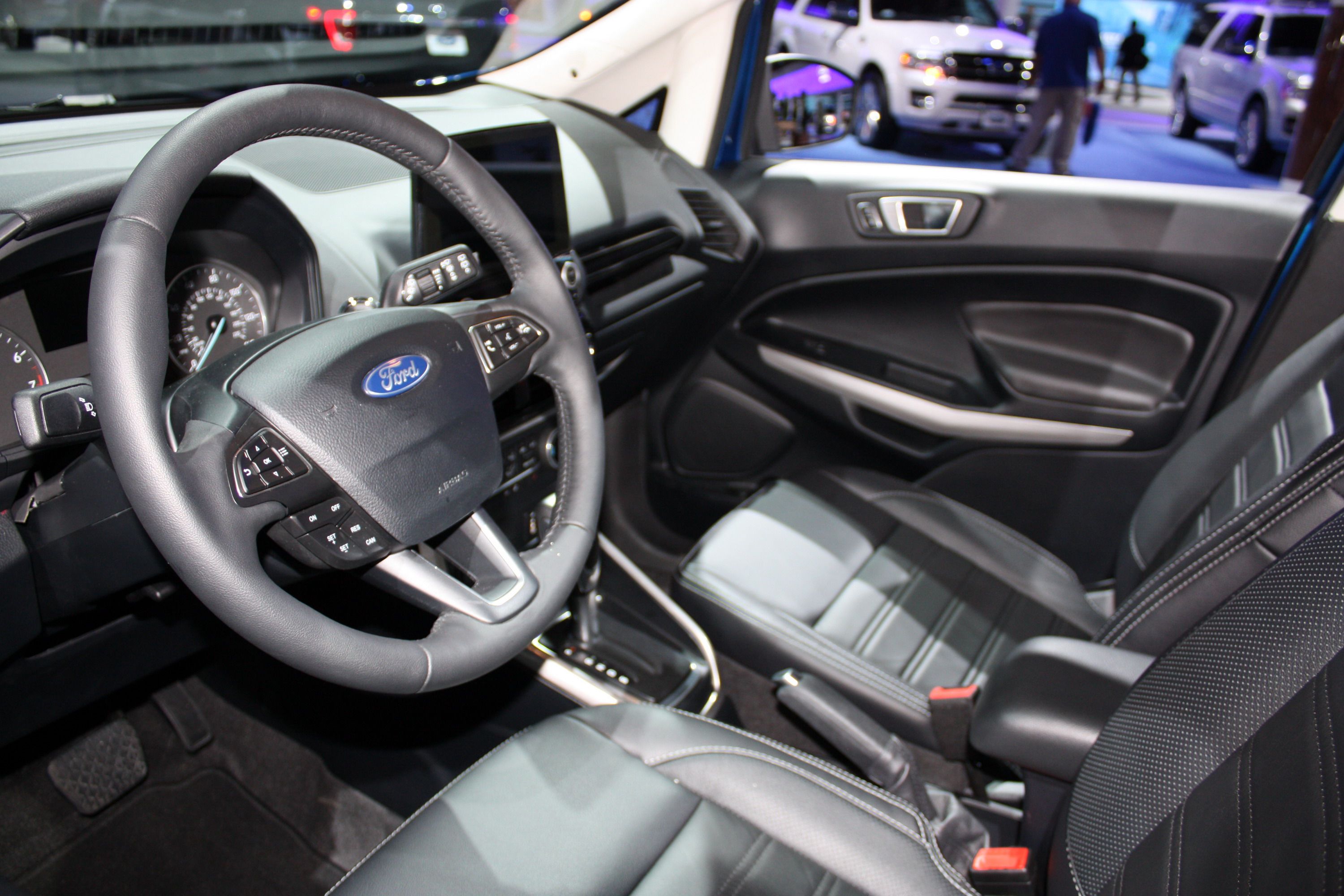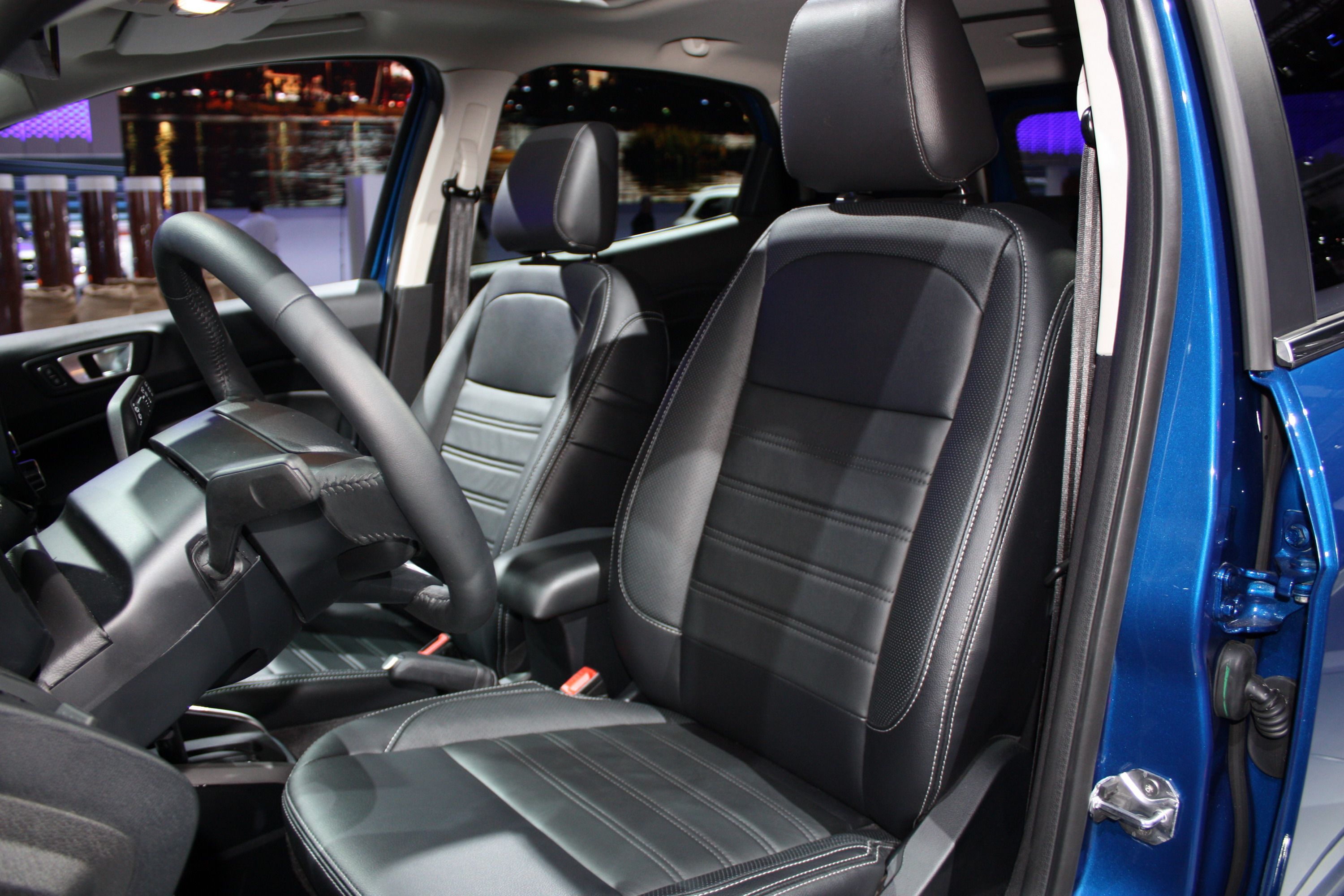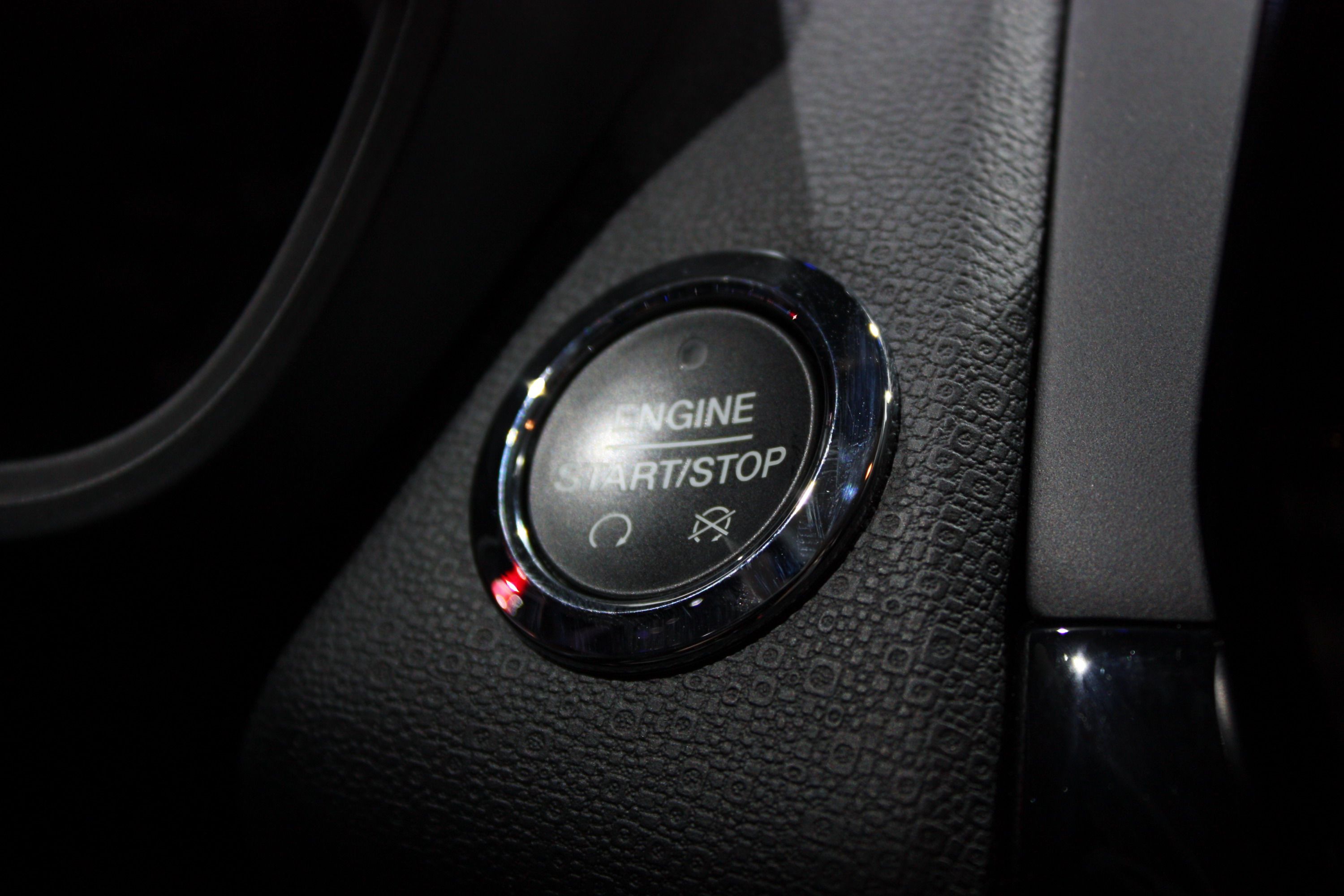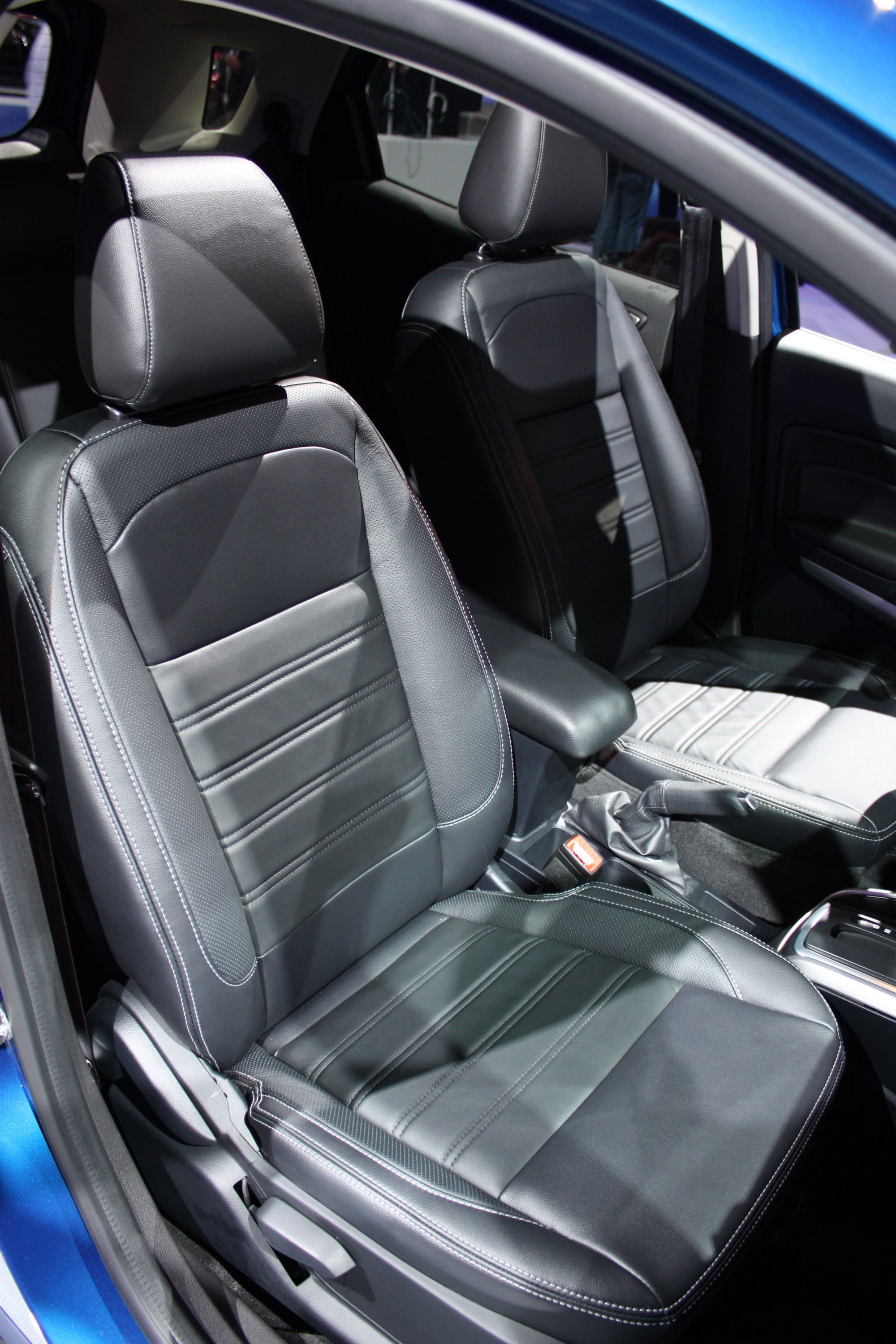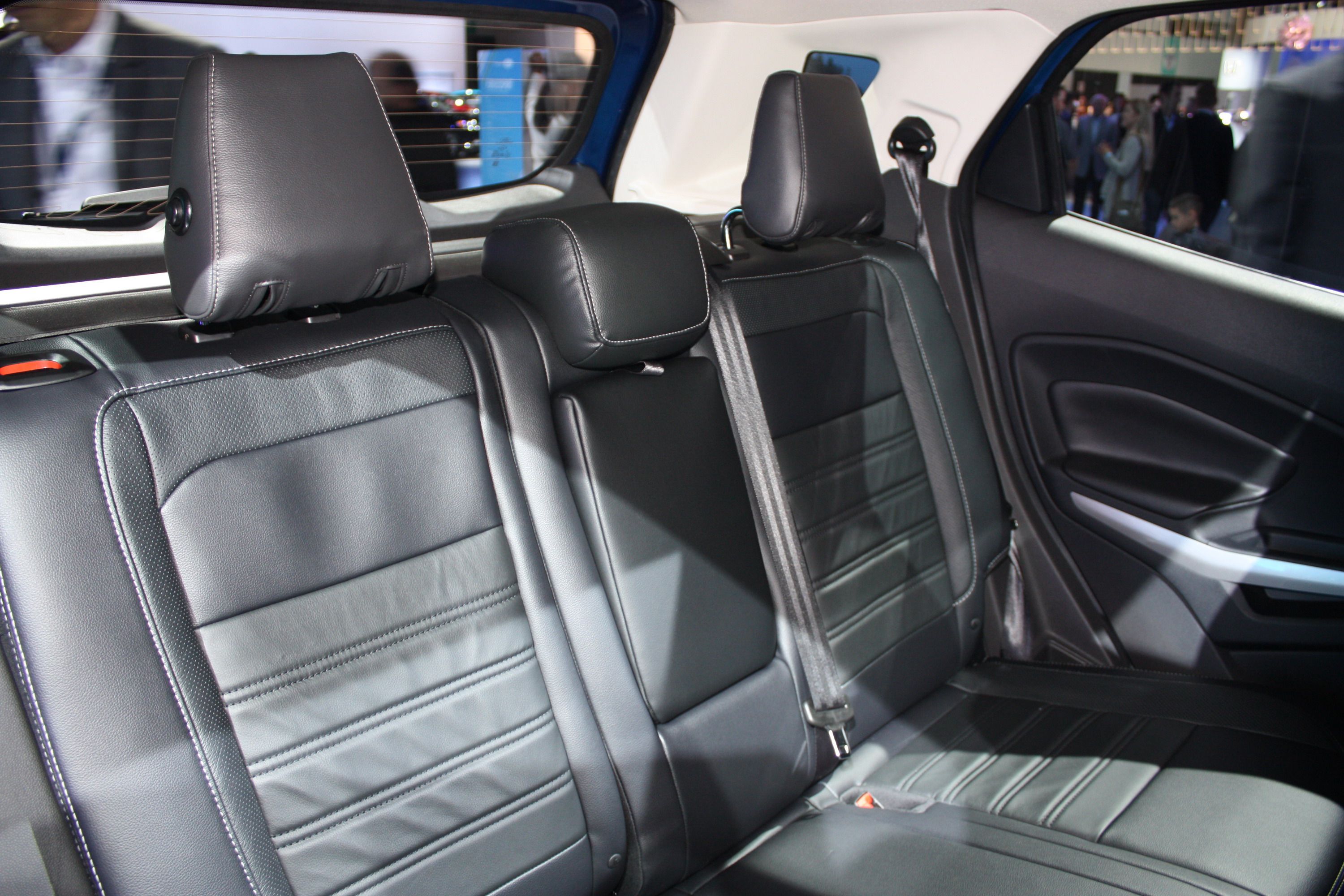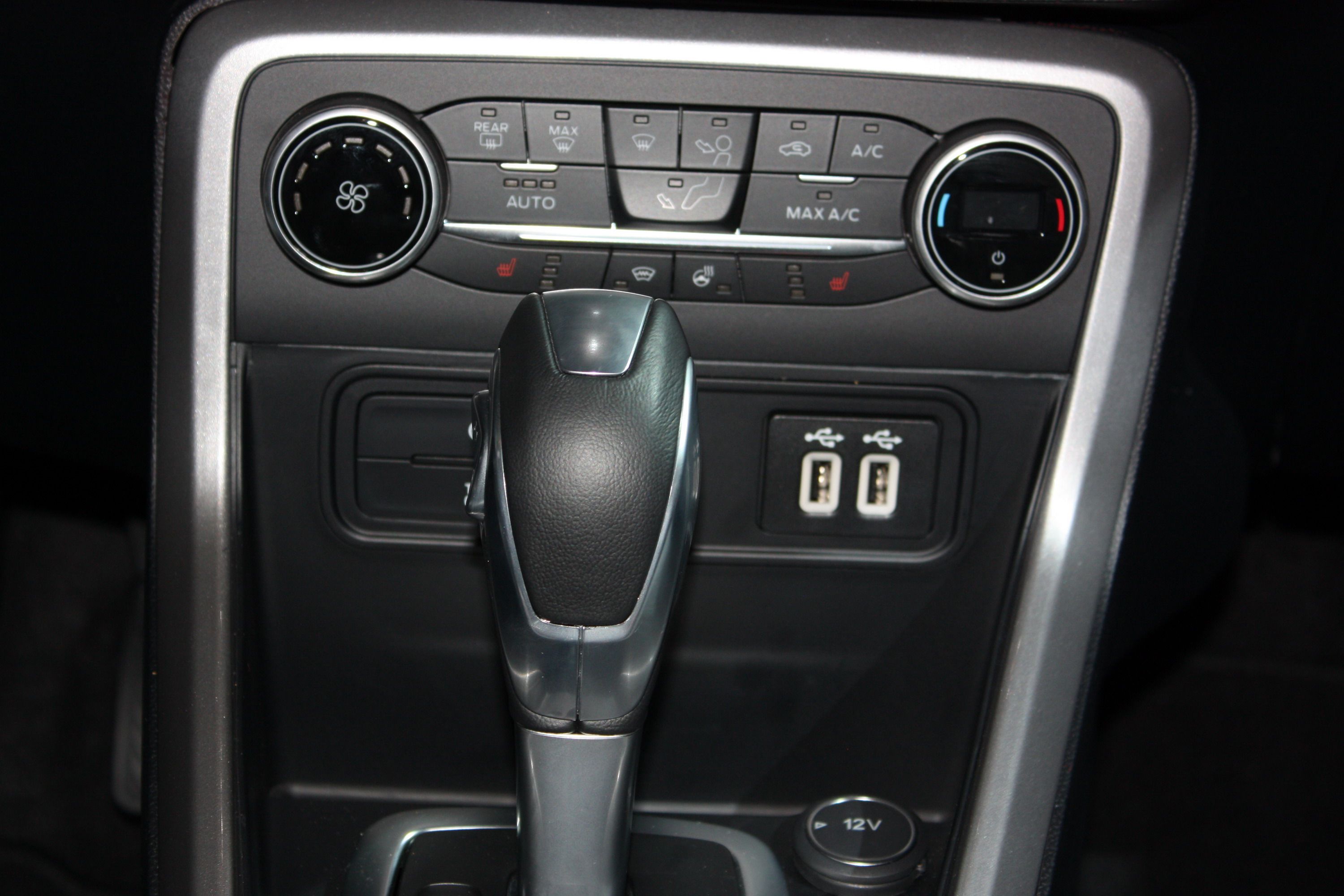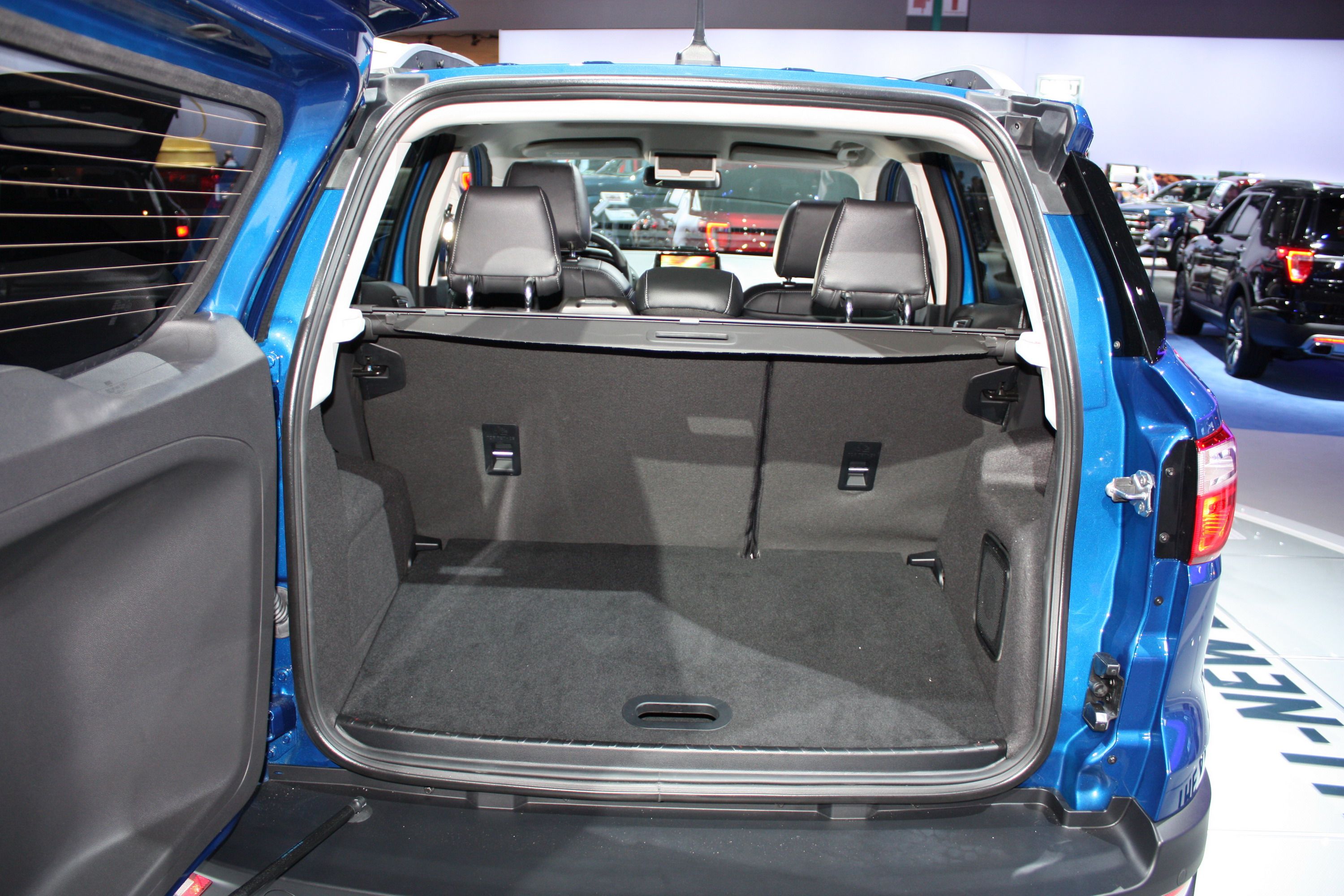The second-generation Ford EcoSport was introduced back in 2012, but it didn't arrive in the United States until 2017. That's when Ford updated the vehicle and decided to enter the subcompact crossover market in North America. The facelifted included a revised front end design, a mildly reshaped rear end, a new infotainment system with new technology, and some revisions to the drivetrain.
A successful nameplate in Europe, the EcoSport comes to the U.S. to try and fulfill a difficult task. It has to compete against a handful of subcompact crossovers, most of which are already established players and selling like hotcakes. Its main rivals are the Honda HR-V, the Mazda CX-3, and the Nissan Kicks, which replaced the old Juke starting 2017. Do you think the EcoSport has what it takes to stick it to all of the heavy competition and come out on top? Well, let’s take a good look at it and how it stacks up to see what it’s really working with.
2018 Ford EcoSport
- Make: Array
- Model: 2018 Ford EcoSport
- [do not use] Vehicle Model: Array
Exterior
Even if this little SUV wasn’t sporting a name like “EcoSport” or wearing a Ford badge, you would know at first glance that it is a Ford. Take a look at the front end; does it look familiar? It should because it’s nearly identical to other Ford models like the Ford Fiesta, Ford C-Max, Ford Escape, and Ford Edge, just downsized and tweaked a bit. All of the general design cues in the front end are there – that oddly shaped grille with horizontal slats, the small air dam that is surrounded by an insert to make it look larger, and those funky shaped headlights and fog lights. The odd styling around the fog lights actually makes it look like Ford intended to use larger fog lights but aborted the idea early on and forgot to change the design of the fascia. Something fairly unique to this front end is the way the A-pillars are curved at the bottom and feed into the elevated edges of the hood. It’s a surprisingly muscular look that gives the impression that windshield is recessed just a bit.
Moving over to the sides, we see typical Ford styling. There’s a mild body line that runs along the same plane as the door handles, and down below, toward the bottom of the doors, there’s a sculpted look that bleeds lightly into the somewhat protrusive fender flares. The front fender flares look nice, but in back, they almost look forced – or like you could lower the body by about 8 inches and make this thing a low-rider. The body cladding from the bottom of the front fascia wraps around and continues along the bottom of the doors and the side skirts. The side view mirrors are mounted to the doors, but they would look better if the were more horizontal and mounted in that corner, right between the A-pillar and the edge of the door – this could be something we see change with the first facelift in a few years.
Around back, the rear quarter glass bends ever so slightly toward the rear hatch, following the control of the quarter panel itself. The hatch is as upright as it could possibly be but is hinged on the driver’s side, so it swings open from right to left instead of swinging upward like 98 percent of SUVs on the market. The sculpted body line on the bottom of the hatch matches that of the wheel wells and that sculpted line on the bottom of the doors. The body cladding also continues to the rear and covers the entire rear fascia. There is a reflector in each corner of the rear fascia to go with a silver insert in the middle that matches only the roof rails up top.
The Competition
As I mentioned before, this segment is crowded, and the EcoSport has a lot of work to do if it’s going to compete against the likes of the Mazda CX3 (top left,) the Honda HR-V (top right,) or the Buick Encore (bottom.) to name a few. Each of these models takes their own approach to exterior styling while maintaining a nearly identical body styling. The CX-3 is the oldest of the three with more of a coupe-like stance with its slightly slower roof, but that’s part of the reason why (U.S. News} ranks it No. 1 out of the many competitors in this niche. In comparison, it earned an overall rating of 8.3 out of 10 compared to the HR-V’s ranking of 8.1 or the Encore’s rating of 8.0. All three are equally as stylish, but none of them have the unique styling seen in the front end that the EcoSport has. In case you don’t realize what I’m talking about, I mean the curved A-Pillars and the elevated edges of the hood.
What it really boils down to in the looks department is what exactly it is you’re looking for. If you want something that’s really sporty, then the CX-3 is really your best bet. But, if you’re looking for something that’s more utilitarian in nature as far as design goes, you’ll want to go with the EcoSport, Honda HR-V, or the Buick Encore, as they all feature more SUV-ish look to them.
So how small is the EcoSport compared to the Escape, previously the company's smallest crossover in the U.S.? It's notably smaller really, starting with a 20-inch shorter length. While the Escape measures 178.1 inches, the EcoSport is only 158.1 inches long. It's also three inches narrower and two inches lower, while its wheelbase is 6.7 inches shorter.
The EcoSport is also smaller than its competitors. It's a little more than 10 inches shorter than the Honda HR-V, Mazda CX-3, and Buick Encore. On the other hand, it's just as wide, and it's actually a bit taller than the HR-V and CX-3. Despite behind notably shorter, the EcoSport has a competitive wheelbase that's only between one and three inches shorter than the competition. This means that Ford obtained a compact body by shortening the front and rear overhangs and without altering passenger space.
|
Mazda CX-3 |
Honda HR-V |
Buick Encore |
Ford EcoSport |
|
|
Wheelbase (inches) |
101.2 |
102.8 |
100.6 |
99.2 |
|
Length (inches) |
168.3 |
169.1 |
168.4 |
158.1 |
|
Width (inches) |
69.6 |
69.8 |
69.9 |
69.5 |
|
Height (inches) |
60.7 |
63.2 |
65.2 |
65 |
Interior
The inside of the EcoSport is actually pretty sporty. Like a lot of other models in this segment, it has the wraparound dash and the option of bi-colored interior to help make it more appealing to the masses. The extension of the passenger side corner of the dash is actually unique to this segment as it curves sharply and independently of the driver’s side. This design helps to give the feeling of extra space and interior width. The instrument cluster is rather basic with two large gauges (tachometer and speedometer) that are divided by a small digital display. The Sync3 infotainment system that sits atop the dash as a funky design with a large knob on each lower corner and buttons in between. The steering wheel is a traditional Ford wheel with thumb buttons on each of the side spokes, and a divided third spoke at 6 O’clock.
The center console has a simplistic design with the HVAC controls front and center. There is a knob on either side with push buttons in between. This design actually goes well with the infotainment display just above it. There is a small pocket ahead of the shifter, but you couldn’t fit much in there. Just to the rear of the shifter, the center console drops off by about four inches or so – a move that helps to increase the feeling of space in an otherwise small vehicle – where there is a pair of cup holders and a couple of small storage cubbies surrounding the hand brake. Just behind that, the console elevates again to provide another storage compartment.
On the comfort front, the seats don’t look to offer as much padding as you see on other models in this niche, and the way the right edge of the console jogs right a bit in front of the passenger seat, front legroom might be really cramped for the passenger. In fact, the more you look at it, the way the armrest on the door extends away from the door, along with the shape of the center console, means the passenger will have to keep their legs pretty close together when riding shotgun. It may not be a big deal for some, but it could prove to be uncomfortable on longer road trips.
The Competition
Multi-colored interiors are fairly common in the subcompact SUV segment. The most dramatic of all goes to the Mazda CX-3 (top left,) hands down. Like the EcoSport, the CX-3 has an infotainment display perched atop the dash, but the Mazda’s is motorized and can hideaway unlike that of the EcoSport. The CX-3 feels much larger on the inside thanks to the small instrument cluster and the large, colored insert that runs the width of the dash from the instrument cluster toward the passenger door. The HVAC vents are small, sporty and round. The seats feature a lot more color than those in the EcoSport, and the center console offers better usability. It should also be noted that the CX-3 can be customized with two interior colors. The image you see above shows road inserts and white contrast with black trim – not bad.
On the other hand, you’ve got the Honda HR-V (top right)that provides more of a utilitarian look with the infotainment display built into the center stack and angled slightly toward the driver. The instrument cluster is larger than the CX-3’s and features a large, central speedometer. The HR-V also offers a dual-tone interior (in this case black and white), but the real deal maker here is the design of the center console. It is what I like to call a half-floater, which basically means it has a storage area and power sockets underneath the shifter area in the front. This allows for extra storage room and is innovative as far as bringing extras into what would be a cramped cabin otherwise. The HR-V also features a long, horizontal vent on the passenger side.
The Buick Encore (bottom) offers what has to be the most luxurious cabin of all, with a two-tier dash, large infotainment display, and straightforward center console. While there aren’t really colored options to choose from like you find in the other offerings, the upper tier of the dash, upper trim and the tops of the door trim panels are all a lighter shade of gray in contrast to the black interior. You’ll also notice that Buick made use of the wide base at the bottom of the A-Pillars by installing a tweeter in each corner, while the wraparound nature of the dash gives the interior an upscale feel that is more commonly found in higher-range vehicles.
In the end, the EcoSport actually comes off as quite a bit cheaper as far as interior appointments go. Compared to models like the CX-3 or Encore, the interior lacks that luxurious styling that we’ve all come to love. The CX-3 is definitely sportier, while the HR-V is more utilitarian but very inviting. It should also be noted that front legroom for the front passenger appears to be better in every model mentioned here over the EcoSport.
When it comes to trunk space, the Ford EcoSport offers more room than some crossovers, but falls behind others. For instance, it's roomier than the Mazda CX-3 and the Buick Encore, but it falls behind the Honda HR-V. The EcoSport's problem isn't with space, but with the side-opening tailgate that forces you to leave ample room behind the vehicle when loading luggage. With the rear seats in place, the EcoSport has an 20.9-cubic-foot capacity. That’s 8.5 cubic feet more than the Mazda CX-3 and 2.1 cubic feet more than the Buick Encore. Compared to the Honda HR-V though, the EcoSport falls behind by 3.4 cubic feet.
When the rear seats are folded flat, trunk capacity jumps to 50 cubic feet. This time around, the EcoSport offers a bit more space than the Mazda CX-3, rated at 44.5 cubic feet and a bit more more than the Buick Encore, rated at 48.4 cubic feet. But it’s not as roomy as the Honda HR-V, which offers an extra 8.8 cubic feet of cargo room at 58.8 cubic feet.
Drivetrain
The EcoSport is available with a choice of two familiar engines. First on the list is the 1.0-liter EcoBoost unit. This turbocharged three-cylinder packs 123 horsepower and 125 pound-feet of torque and mates to a six-speed automatic transmission. While not as powerful as the competition, which offers in excess of 130 horsepower, the EcoBoost-powered EcoSport offers solid fuel economy, running for up to 29 mpg highway and up to 27 mpg city.
The second engine is a more traditional, naturally aspirated 2.0-liter four-cylinder. This unit cranks out 166 horsepower and 149 pound-feet of torque, a rating that places the EcoSport above its competitors. The Mazda CX-3, for instance, misses 20 horses and three pound-feet by comparison. The Honda HR-V also falls behind, this time by 25 horsepower and 22 pound-feet. The same goes for the Buick Encore, which has similar torque but lacks 28 horsepower. As far as fuel economy goes, this version also returns up to 29 mpg on the highway, but city mileage drops to 23 mpg.
All told, the EcoSport wins the horsepower wars with the 2.0-liter four-cylinder engine but falls behind the competition in terms of fuel economy, as all of its competitors offer more than 30 mpg on the highway.
The Compeititon
As far as the competition goes, performance and fuel economy is pretty standardized among a good handful of the models in this segment. The Mazda CX-3 can only be had with a SkyActiv 2.0-liter four-cylinder that delivers 146 horsepower and 146 pound-feet of torque. It can be had in front-wheel drive or all-wheel drive, but that also plays a significant role in fuel economy. In FWD form, the CX-3 manages 29 mpg in the city, 35 mpg on the highway, and 31 mpg combined. Get all four wheels turning, however, and those numbers drop to 27,32,and 29 respectively.
The Honda HR-V is available with only one engine, the 1.8-liter four-banger. It delivers a decent-for-this-segment 141 horsepower and 127 pound-feet of torque. Shifting duties can be handled by a CVT or a six-speed manual, but if you want the manual, you have to stick with front-wheel drive only. All-wheel drive models must have the CVT. With the six-speed manual, the HR-V manages to get 25 mpg in the city, 33 mpg on the highway, and 28 mpg combined. For with the CVT and 2WD, and those numbers increase to 28,34,and 31, respectively. AWD models with the CVT get 27 mpg in the city, 31 mpg on the highway, and 29 mpg combined.
The Buick Encore sits right in the middle as far as engine size goes with a 1.4-liter four-cylinder. It delivers 138 horsepower and 148 pound-feet of torque. But, if you go with the Sport Touring Trim, that engine is tuned to deliver 153 ponies and 177 pound-feet. The Encore achieves 25 mpg in the city and 33 mpg on the highway in base form with front-wheel drive. Moving up to all-wheel drive gets you just 23 mpg in the city and 30 mpg on the highway. The range-topping model with the few extra ponies and pound-feet garners 28 mpg in the city and 34 mpg on the highway with two-wheel drive or 26 mpg in the city and 32 mpg on the highway with all-wheel drive.
As you can see, the fuel economy ratings and power output are all pretty close across the board, so unless there’s something specific that you plan on doing, none of them are really a bad choice as far as these figures go.
|
Mazda CX-3 |
Honda HR-V |
Buick Encore |
Ford EcoSport |
|
|
Engine |
SKYACTIV 18-G 2.0L DOHC 16-valve 4-cylinder with VVT |
1.8L In-Line 4-Cylinder |
Ecotec 1.4L turbocharged DOHC I-4 |
1.0-liter, EcoBoost, three-cylinder |
|
Horsepower |
146 HP |
141 HP |
138 HP |
123 HP |
|
Torque |
146 LB-FT |
127 LB-FT |
148 LB-FT |
125 LB-FT |
|
Transmission |
6-Speed automatic |
6-Speed Manual |
Hydra-Matic 6T40 6-speed automatic |
6-Speed manual |
|
EPA city/hwy/combined |
29/35/31 |
25/33/28 |
25/33 |
30/40/34 |
Note: On the Ford EcoSport numbers are estimated
Pricing
Pricing for the EcoSport starts from $19,995. That's how much you have to pay to take home the entry-level S trim. If you opt for the SE with extra features, it will set you back $23,150. Go with the Titanium trim, and you will pay $26,160, while the SES version comes in at $27,275 before options.
The Competition
The Mazda CX-3 can be had in three trims. The entry-level model starts out around $21,790, while the mid-range model commands $23,875. The range-topping Grand Touring model will hit the bank for $27,145. The Honda HR-V sits at a similar price point with the entry-level LX model calling for $20,520, the EX calling for $23,720, and the range-topping Touring commanding $28,540. When it comes to the Buick Encore, it’s roughly the same size as the EcoSport, the HR-V, and the CX-3, but is far more luxurious (if you still fancy Buick as a luxury brand) and starts out around the price it will cost you to get a range-topping model from any other brand. The entry-level Encore Group starts out at $25,565. The next level up calls for $27,855, and the mid-range model hits the bank for $28,850. The next level up goes for $29,800 while the range-topping Premium Group goes for $31,285.
As you can see, the Buick is clearly the more expensive of them all, but it’s much more luxurious and has a few extra trim levels at that. If it’s luxury and comfort that you’re going for, the Buick is the way to go, but it will cost you. If you’re looking to spend as little as possible, the EcoSport may float the bill nicely, but if not, the CX-3 or HR-V will end up in your driveway for a fair price.
Other Options
Chevy Trax
As I mentioned earlier, the subcompact segment is as crowded as it gets, and one of the prime contenders we haven’t mentioned thus far will go head to head with the EcoSport. Of course, I’m talking about the Chevy Trax. If you’re impressed by the Buick Encore, but can’t seem to wrap your head around the price of such a small model, then looking to the Chevy Trax might provide you a little relief. Essentially a rebadged Encore, the Trax starts out at just $21,300 and comes with a 1.4-liter engine. It’s not quite as powerful as the Encore, with just 138 ponies and 148 pound-feet of torque but the interior appointments are all there, and it’s a strong proposition for the EcoSport. It manages to achieve 25 mpg in the city and 33 mpg on the highway.
Read our full review on the Chevy Trax..
Subaru Crosstrek
While it seems a bit like the red-headed stepchild compared to the other models that we’ve discussed here today, the Subaru Crosstrek is actually a competitor in this segment. It features an SUV-like appearance and packs a 2.0-liter Boxer engine that delivers 148 horsepower and 145 pound-feet of torque A five-speed manual transmission comes standard on the 2.0i and 2.0i Premium trims, while a CVT can be had as an option on the premium and is standard on the 2.0i Limited. Subaru’s amazing all-wheel drive system comes standard on all models. Those equipped with the five-speed manual can achieve 23 mpg in the city and 30 mpg on the highway, while those equipped with the CVT can manage 26 mpg in the city and 33 mpg on the highway. Pricing for the Crosstrek starts from $21,895.
Read our full review on the Subaru Crosstrek.
Conclusion
And here we are at the end. We’ve covered a total of five different models, plus the all-new Ford EcoSport. It is a little surprising that Ford decided to come out with an SUV smaller than the Escape with as crowded as the market it, but I guess Ford couldn’t live without having a piece of that pie too. If you’re in the market for a subcompact SUV, you have some decisions to make as there are, obviously, some pretty great choices. It seems to me as if some of the other models we’ve discussed here may offer better materials and could be more comfortable, but the EcoSport isn’t without its positives either. After all, it can be customized with 10 different exterior colors, and it has ambient lighting, which is a feature normally left for those with a much higher price tag. At the end of the day, it’s best that you sit down and figure out exactly what your needs are as far as fuel economy and space goes, then look at what kind of budget you can put together for a new car purchase. It won’t be an easy decision, but there are enough models in this segment that you’ll surely find something that fits not only your budget but your personality as well.

